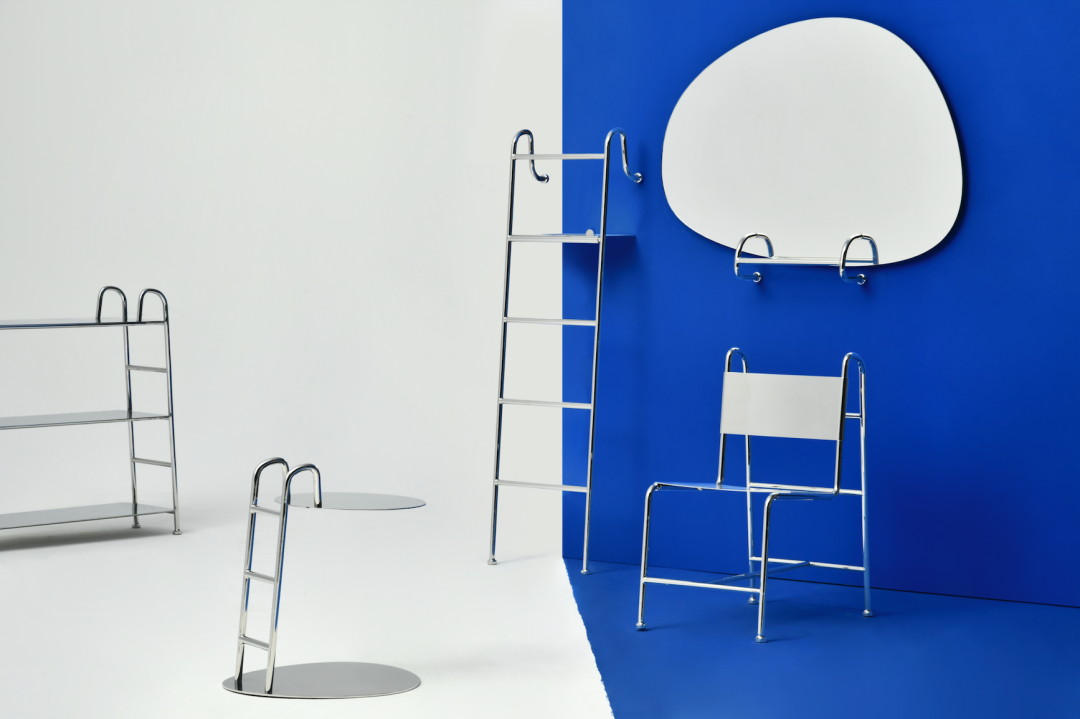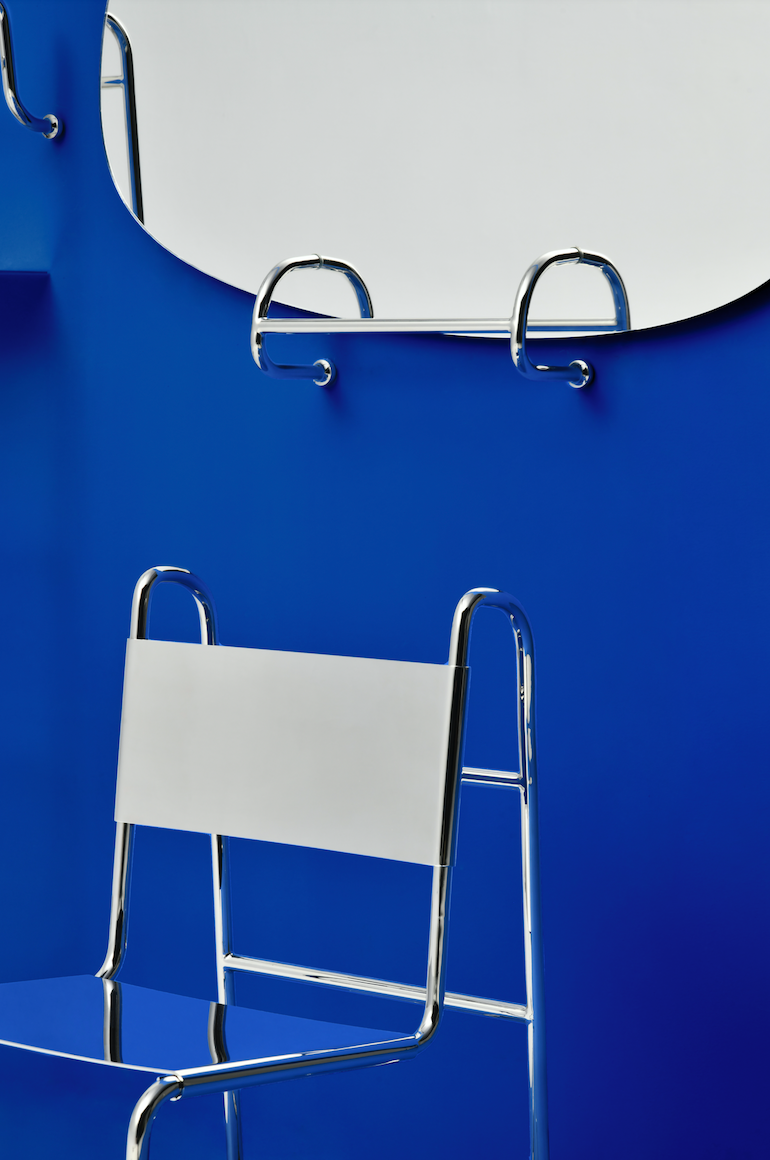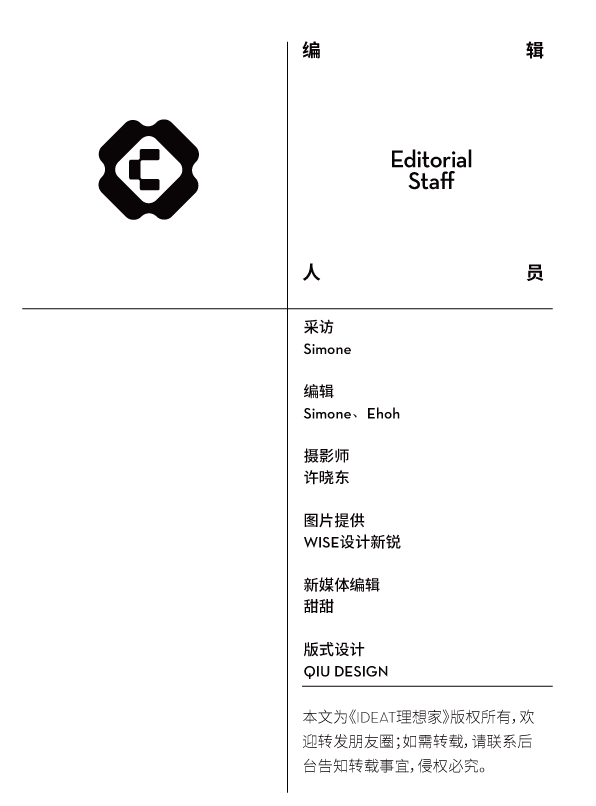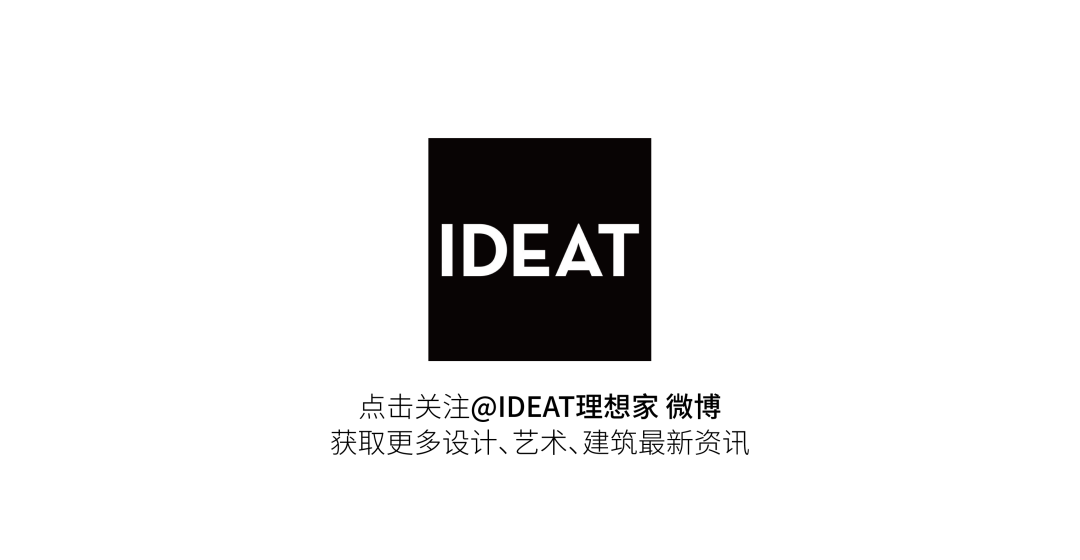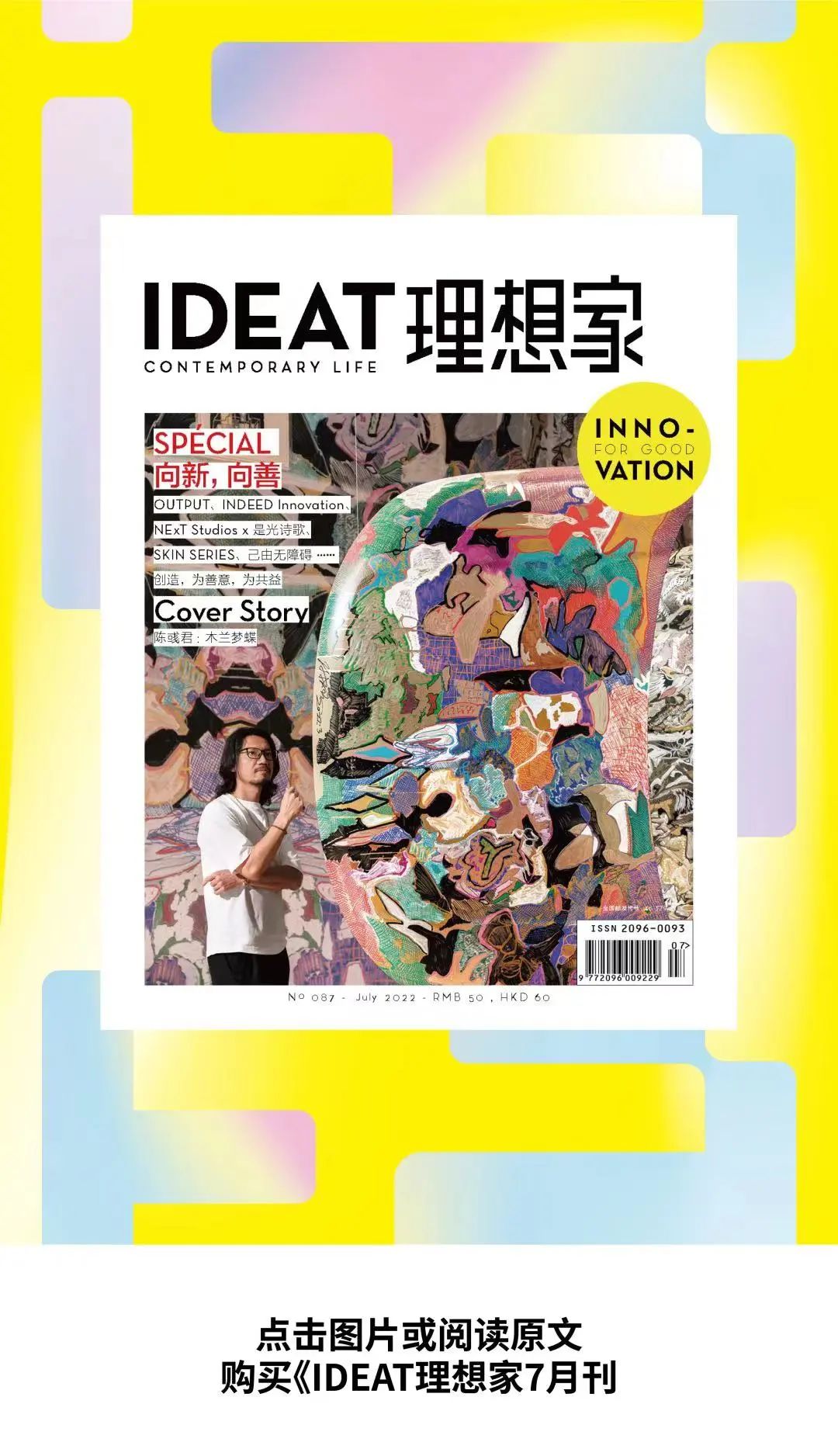


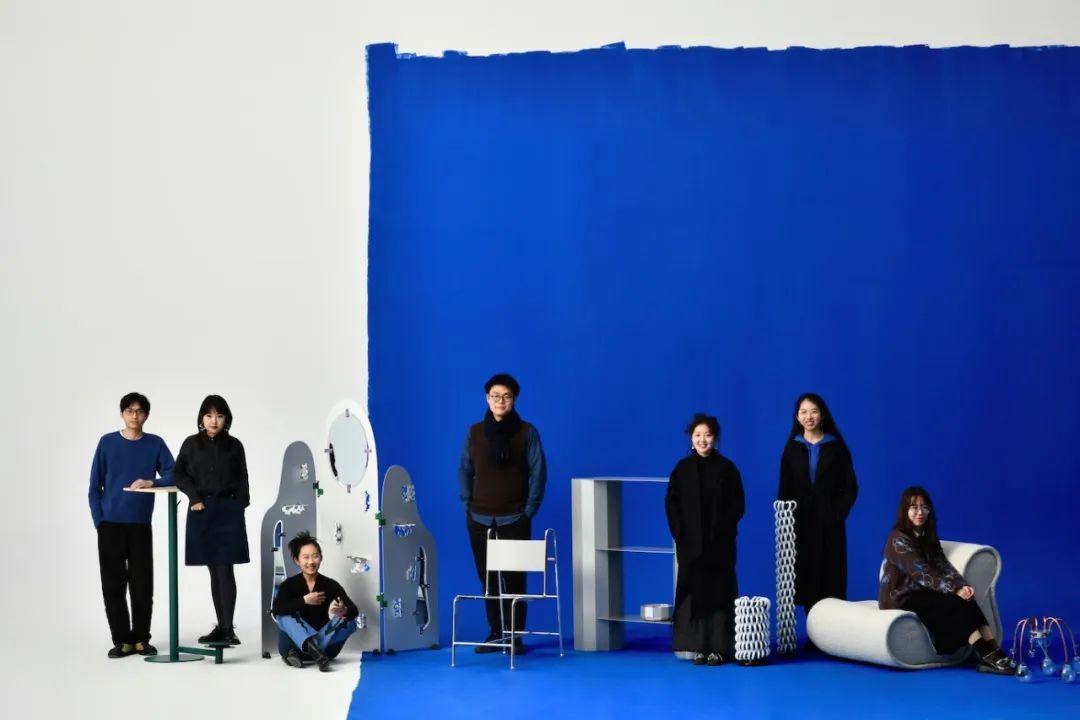
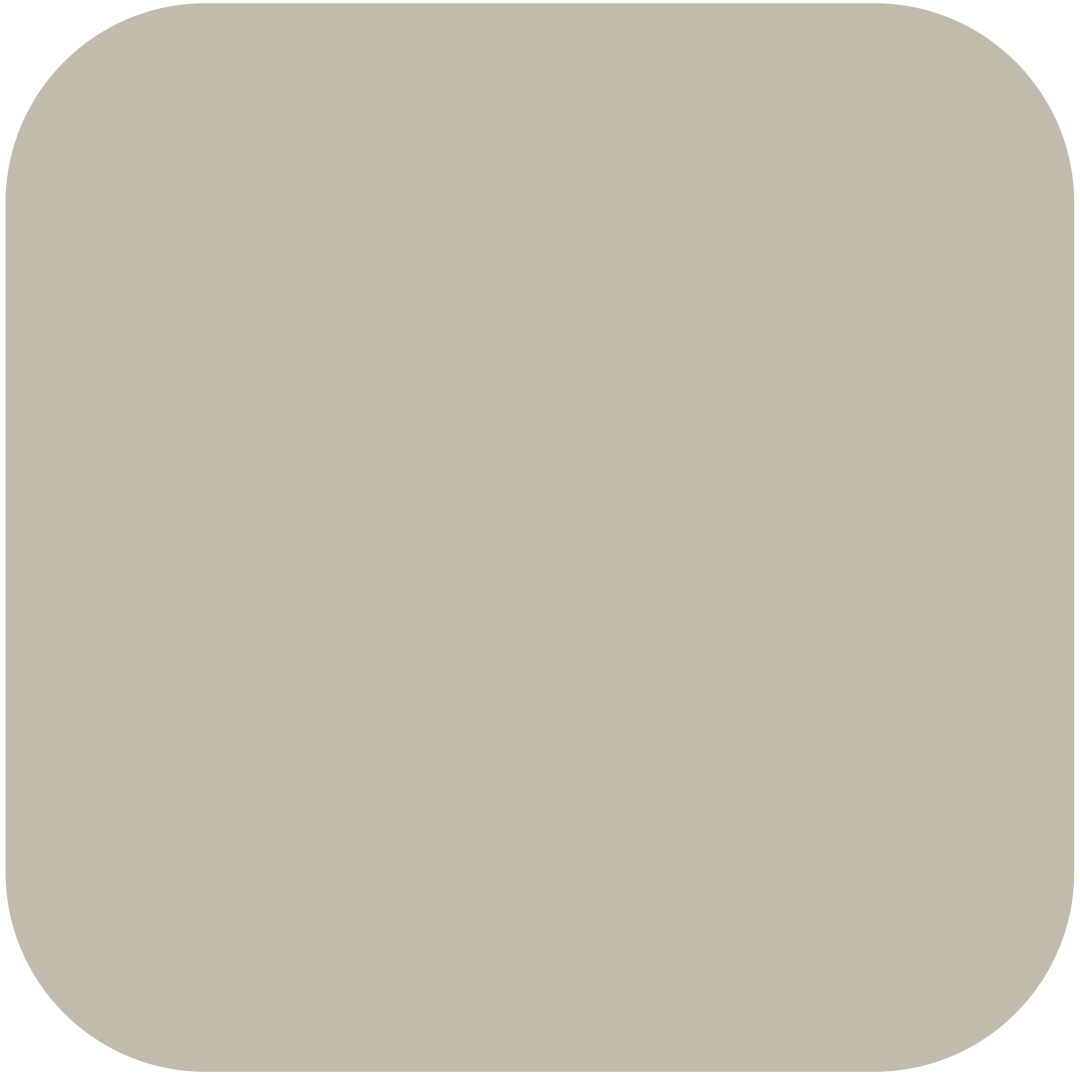
From left to right: Wild Zoo, Yang Motong, Lin Shuan, Zhang Zhongyu, Dai Hongyu, Zhang Shiqi
After going through the selection of WISE workshop and open recruitment, the 7 groups of shortlisted designers have completely different work backgrounds and design logics. During the four-month creative process, WISE provided designers with educational courses and technical guidance to continuously tap their potential. The seven groups of completed works have achieved a more mature completion from the jerky state when they were just shortlisted. transformation. As Cai Liechao, the initiator and curator of WISE, said, "This is a process of experiential education, and this is the most important meaning of WISE."
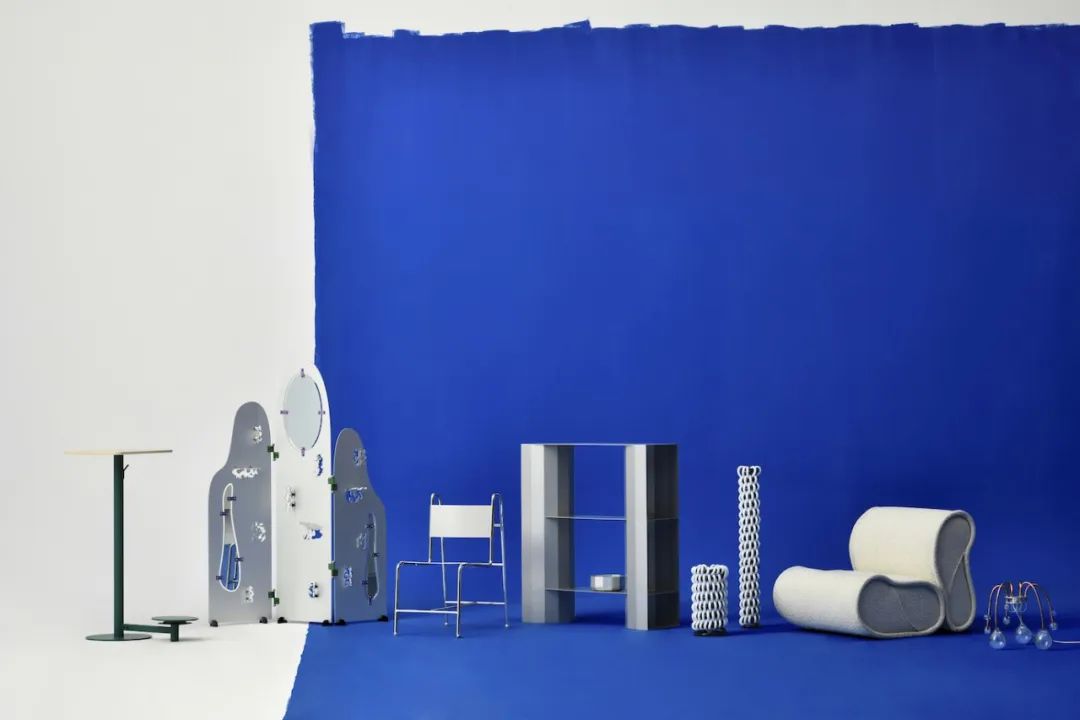
The final selection results of "WISE Design Emerging 2022" have been announced during the exhibition. Designers Zhang Zhongyu, Zhang Shiqi and Dai Hongyu are the top three winners respectively. The first winner of "WISE Design New Talent" will be invited to participate in "DESIGNEW Design Things" in the coming year. This linkage and competition mechanism also makes designers more motivated, and the advanced connection between the two platforms also makes WISE as a designer growth incubator Inspire more and more young designers to inject vitality and new ideas into the new design ecology.
IDEAT interviewed these 7 groups of young designers. When asked how to respond to the challenge of "mission", they shared their thoughts and motivations with us.
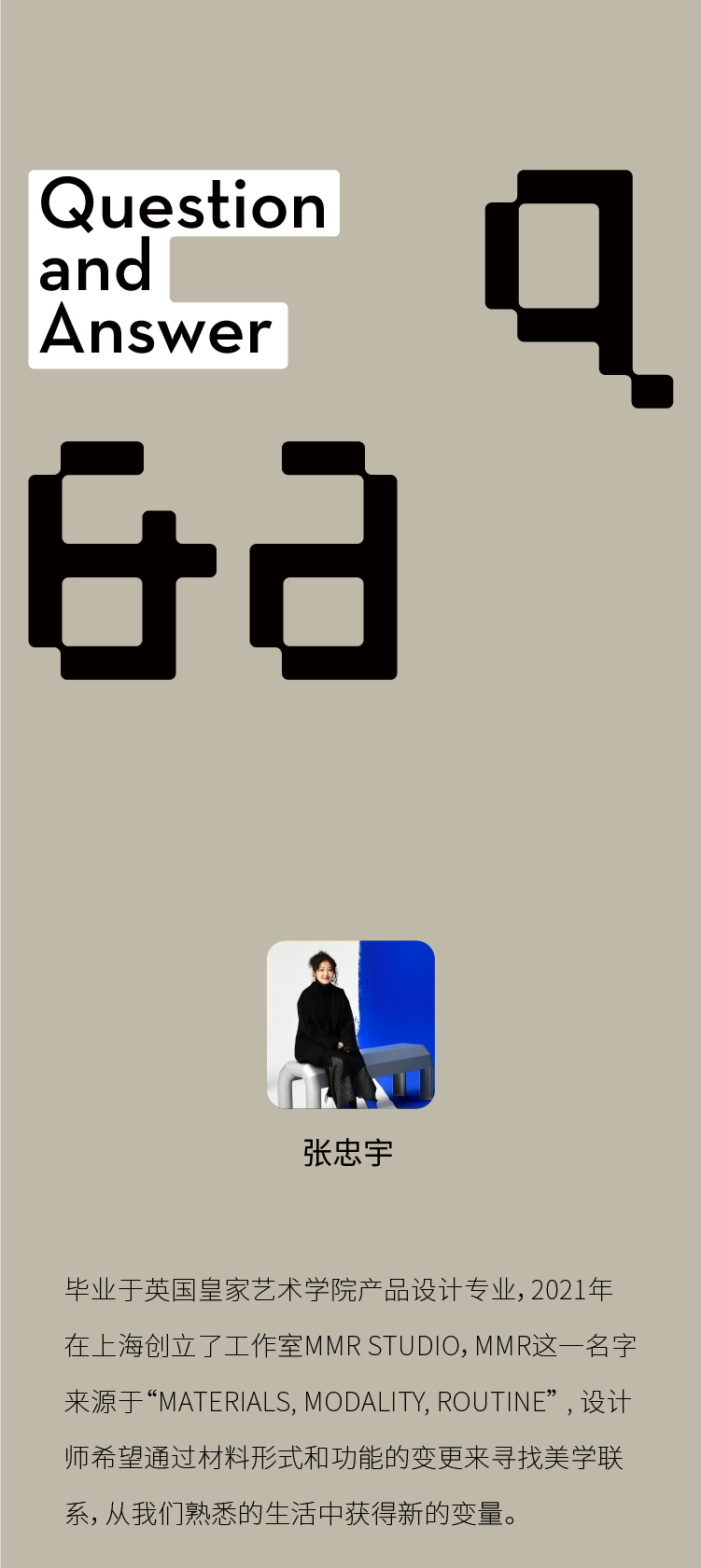
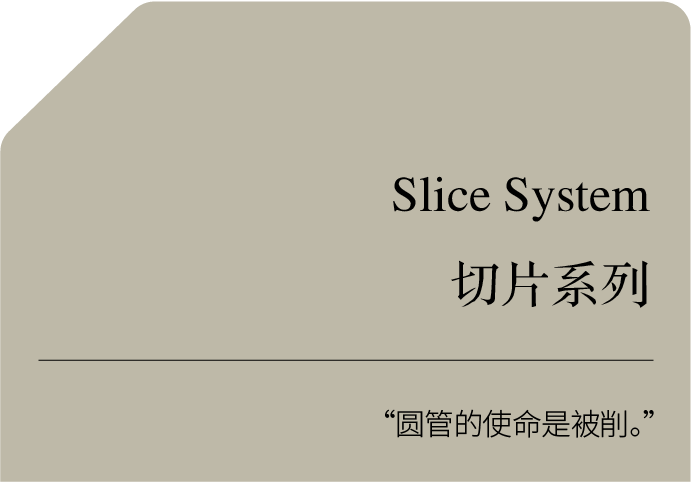
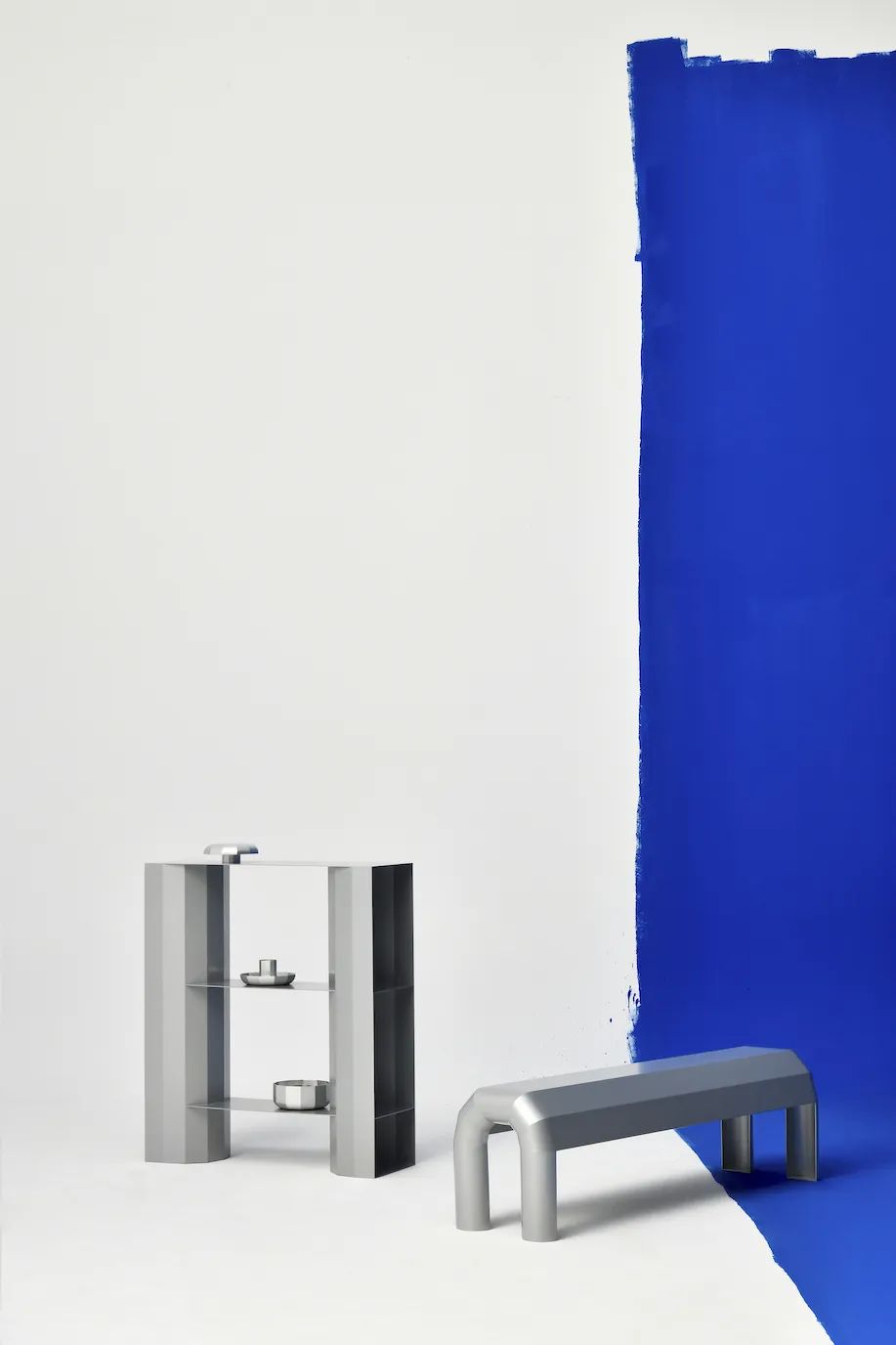
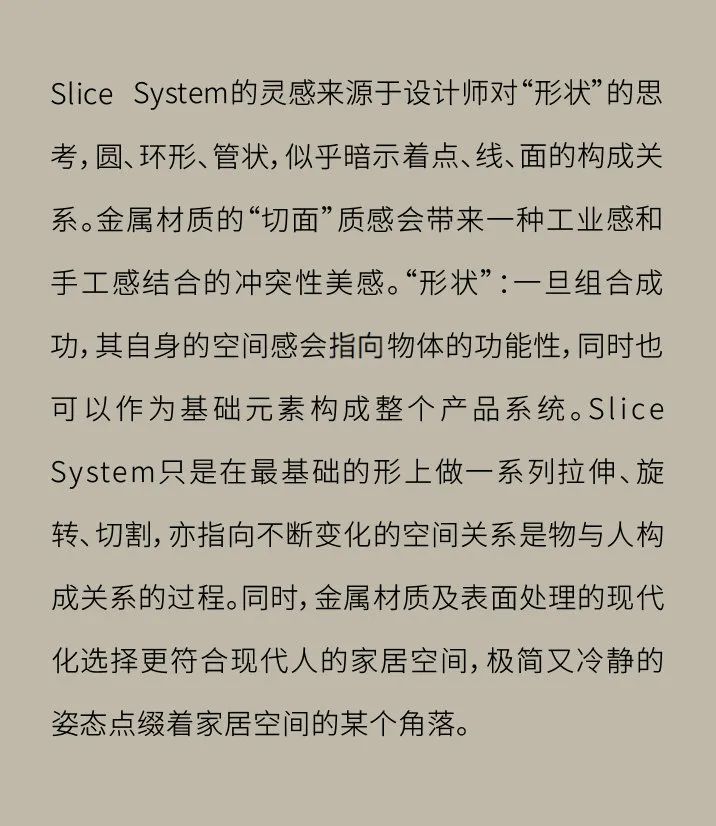
IDEAT: What was the first thought that popped into your mind when you got the proposition "The Mission of the Round Tube"?
Zhang Zhongyu: When I get the proposition of "the mission of the round tube", I will deliberately remove its social and industrial attributes, because the round tube as an element or material noun is very common in human life and industry. In this creation, I want to simply explore the composition of matter itself, and find the form of connection between it and contemporary life and space from the aspects of material, form, function, etc.
IDEAT: Is the final design a continuation of the original idea? What is the specific process of the development of this design motivation?
Zhang Zhongyu: I will start thinking in a "reconstruction" way, making the round tube disappear and then rebuilding. In this plane-like composition, its new functions and forms are naturally generated. The process of my thinking and production is more like doing graphic design - a point on a piece of white paper slowly changes to generate a circle, and then extends a body, which is a direct extension of a plane language in three dimensions, and finally a selective Staying at the moment of slice, the connection between the faces is emphasized, forming an aesthetic that breaks the smoothness. After the product establishes a formal element, I use some design methods to generate different product types and functions. This process is quite surprising, and it will magnify a feature of the inner space of the round tube.
IDEAT: What do you think is the most "highlight" in your design?
Zhang Zhongyu: The biggest highlight of this group of works may be the embodiment of "MODALITY" in the key concept of MMR, that is, by constructing a model and method to think about the possibility of product reorganization and reconstruction in life, which leads to a relationship with space. Changes in relationships with people.
The final result of the slice set in the Slice System series is abstract, and its functional orientation will be vague, which will guide people's imagination about the function of the product and the atmosphere it presents in the space. For example, if it is removed, it can be used as a flower utensil and a lamp, and a variety of extended designs can be made in terms of design. It is interesting to explore the process of changing forms. Some people see its shape and associate it with the Beijing copper pot... So it should also have the potential to be used as a four-piece hot pot set, perhaps a product related to "appetite"...
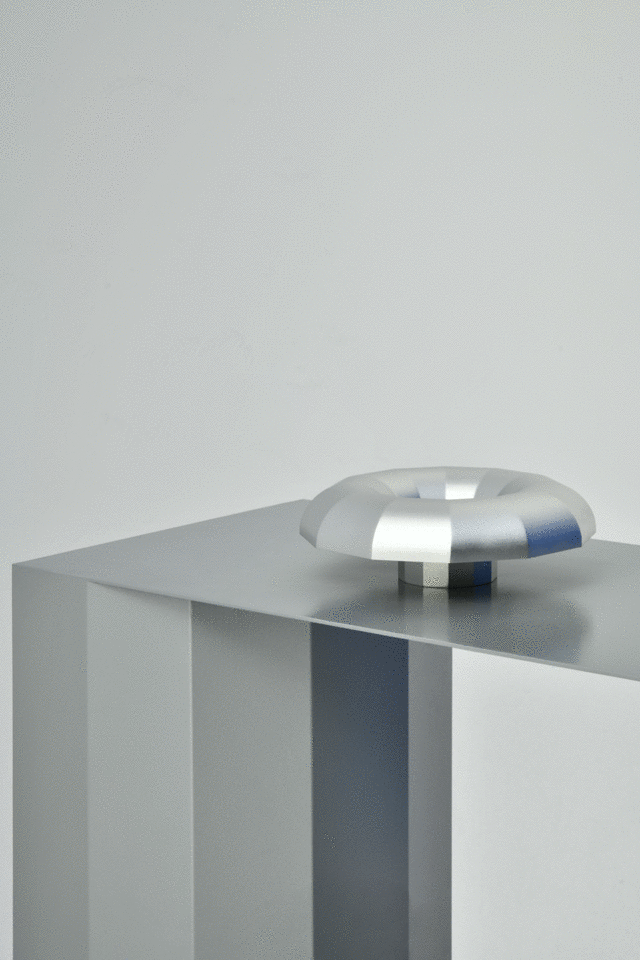
IDEAT: What was the biggest challenge you encountered during the four months of creation? How to solve?
Zhang Zhongyu: The challenge is mainly to consider the two parts of cost control and the possibility of mass production. The visual language of Slice System is relatively simple, and there are relatively mature metal bending processes in China, but the production cost is relatively high compared to other processes and materials, so I need to reconsider the market positioning of this metal series product.
IDEAT: Does this work reflect your usual design thinking? Can you expand on it?
Zhang Zhongyu: I am always willing to explore the different forms and results presented by different materials under the same design logic. During this process, I can clearly see the difference in shape details and texture caused by different material properties, which is very interesting. After finishing the metal version of the slice, I continued to make the slice ceramis, which is the material extension of the Slice System series. Compared to the crisp folds produced by metalworking, ceramics "soften" during high-temperature vitrification, resulting in more organic, natural turns under the force of gravity. The gradient effect is produced by the natural falling and stacking of three different chromaticity points of mud, and produces gradients in different directions at the angular fold lines. This coloring method not only strengthens the turning points, but also weakens the sharpness of the ridges and lines. Shape and color match. The method of double-sided coloring and the unitized design can be used for different functions, as vases, small items or lamps. Ceramic materials also have the possibility of mass production and marketization in terms of production.
IDEAT: What value do you hope your designs can provide people?
Zhang Zhongyu: I am more interested in the narrative and production form of objects. For me, furniture design is not a problem-solving design, but a process of materializing feelings, and also a process of transforming sensibility into rationality. Although the starting point of product design is more personal, the result of this feeling should be smooth and silent, and the design output is just another dimension of the description of things. I want people to be natural, familiar, and flexible when they use the product.

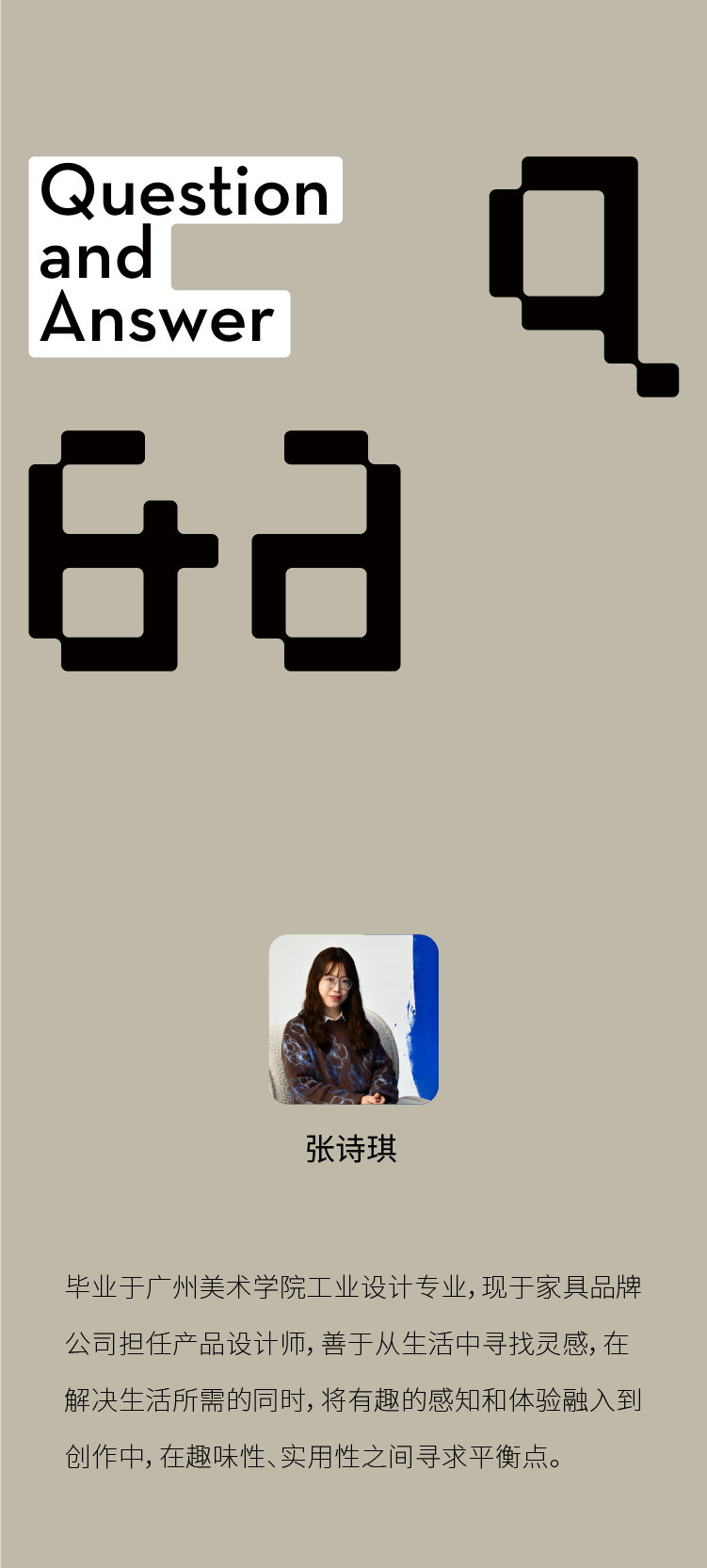
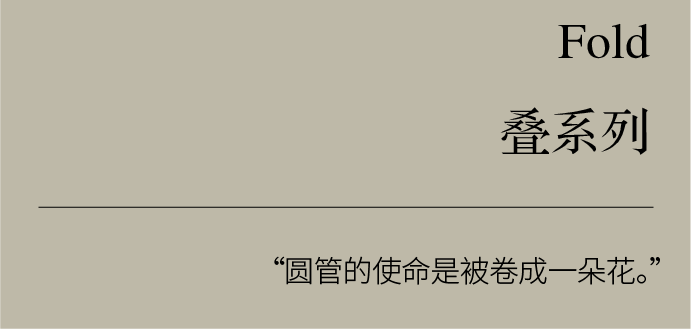
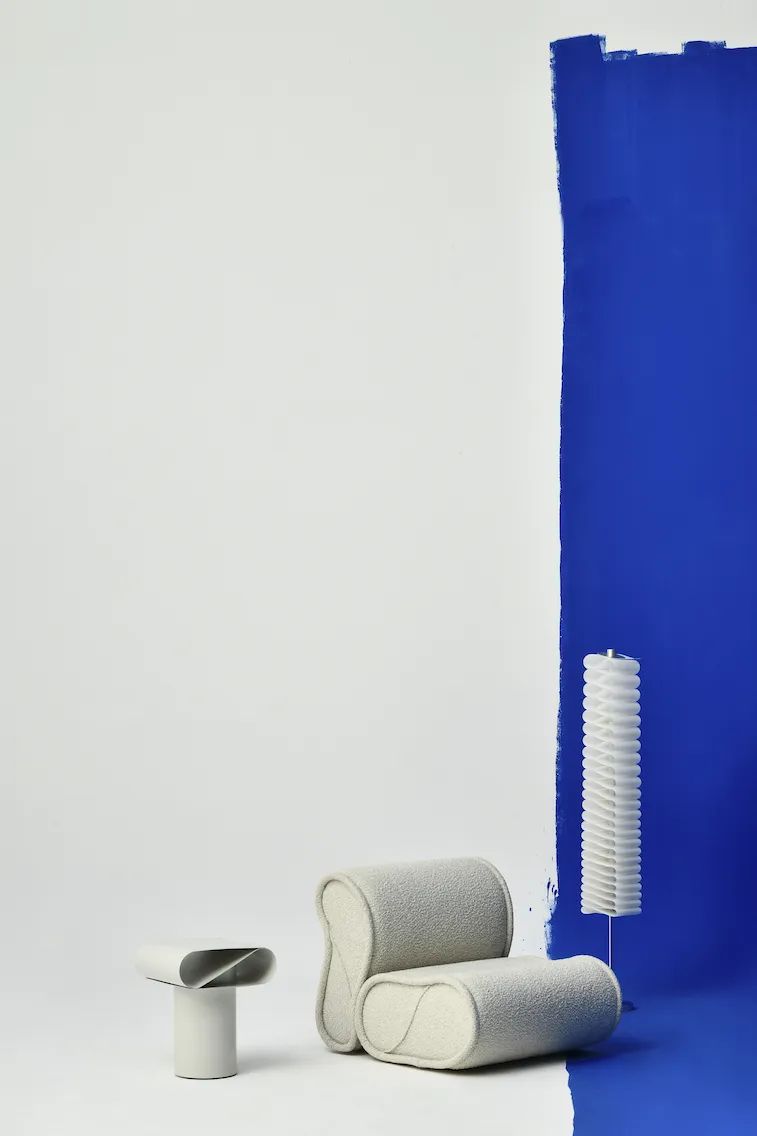
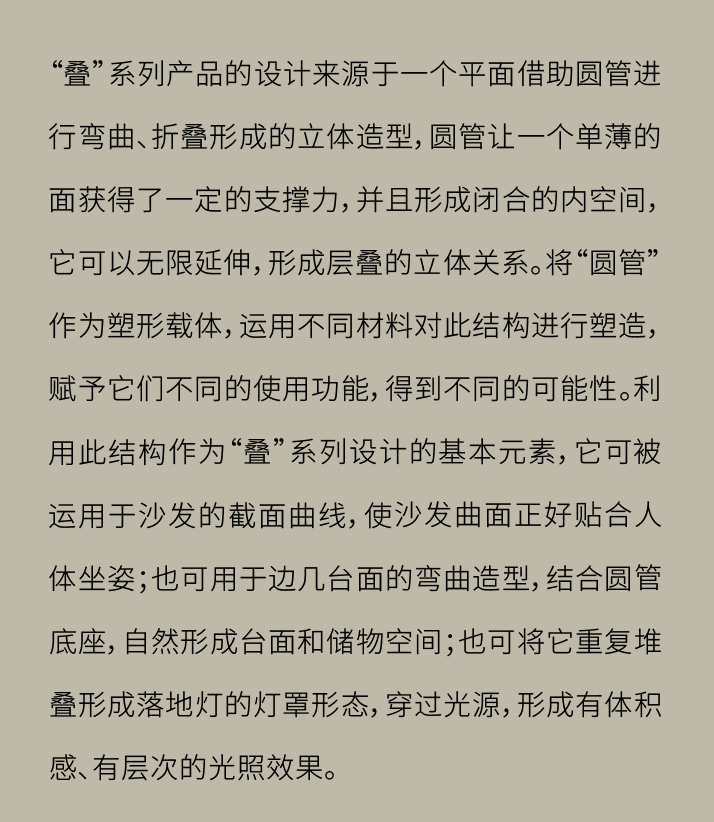
IDEAT: What was the first thought that popped into your mind when you got the proposition "The Mission of the Round Tube"?
Zhang Shiqi: When I got the proposition, a lot of ideas came to my mind, including the use of industrial water pipe connection structures, the weaving of soft circular pipe materials, and the study of the distribution of plant conduits.
IDEAT: Is the final design a continuation of the original idea? What is the specific process of the development of this design motivation?
Zhang Shiqi: Considering the production process and the effect of the finished product, I overturned some ideas that were not easy to implement. In order to break the bottleneck, I decided to find a breakthrough by exploring the relationship between the surface and the round tube. By making some straw molds, I got several different shapes of folding the surface into a round tube, and finally chose one of the shapes as the prototype of the design.
IDEAT: Can you give us the most appropriate description for your work?
Zhang Shiqi: "Endless", endlessly extending.
IDEAT: What do you think is the most "highlight" in your design?
Zhang Shiqi: I think it has strong symbolism and variability. Each product uses the same "folding" shape element, which can become a memory point in the space; their use state is free, The sofa can be combined into different shapes according to the needs, and the shape of the lampshade can be adjusted according to the floor lamp.
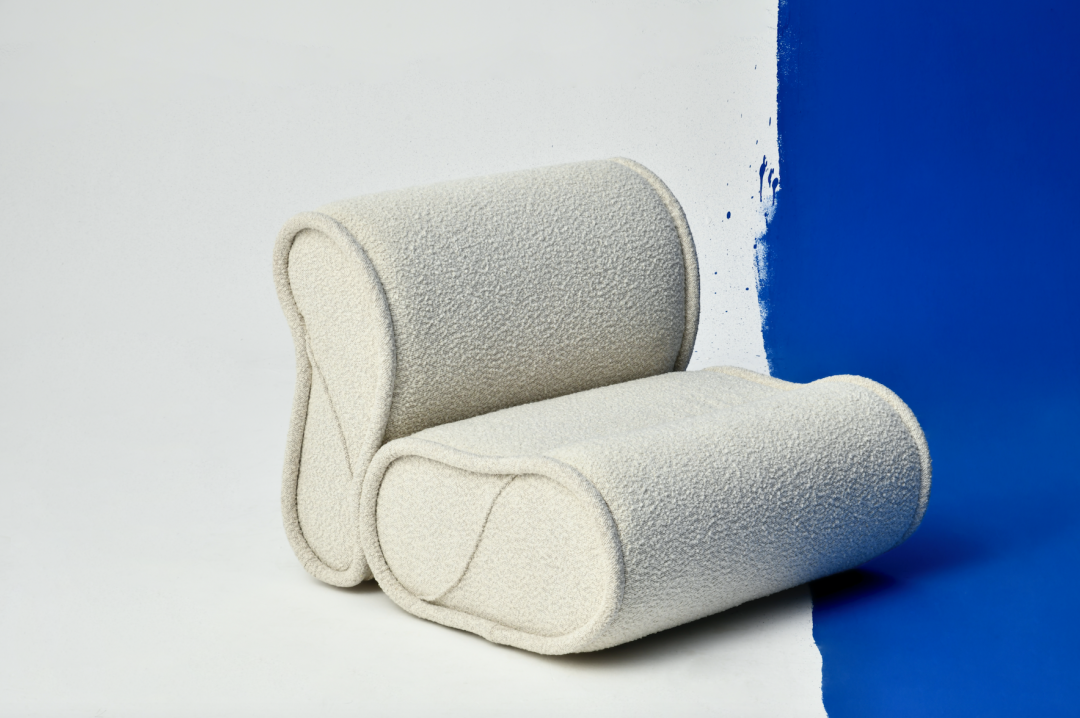
IDEAT: What was the biggest challenge you encountered during the four months of creation? How is it solved?
Zhang Shiqi: The biggest challenge lies in the balance between the ideal state of the work and the production process. For example, when making the lampshade of a floor lamp, the ideal state is that the lampshade will have a natural gradient effect due to gravity. In fact, it should be too heavy and the shape will be too pressed. The flattening effect is not good, and the problem can only be solved by adding a supporting structure, but it will increase the installation process. After several structural experiments, I finally found that the problem can be solved by increasing the friction between the lampshade and the lamp post. The curved shape of the shade can be manually adjusted to suit personal preference.
IDEAT: Does this work reflect your usual design thinking? Can you elaborate on it?
Zhang Shiqi: I hope the design work is malleable and holistic. The three products of the "stack" series are all composed of a simple element, which uses different materials and forms to interpret it, and endows them with different functions. They are independent individuals, and together they have an overall aesthetic feeling.
IDEAT: What value do you hope your designs can provide people?
Zhang Shiqi: Nowadays, people are busy with more and more time, and there is always a lack of time to slow down and experience life. I hope to heal the impetuous mentality in the bustling city through these warm and interesting designs, so that people who love life can resonate.
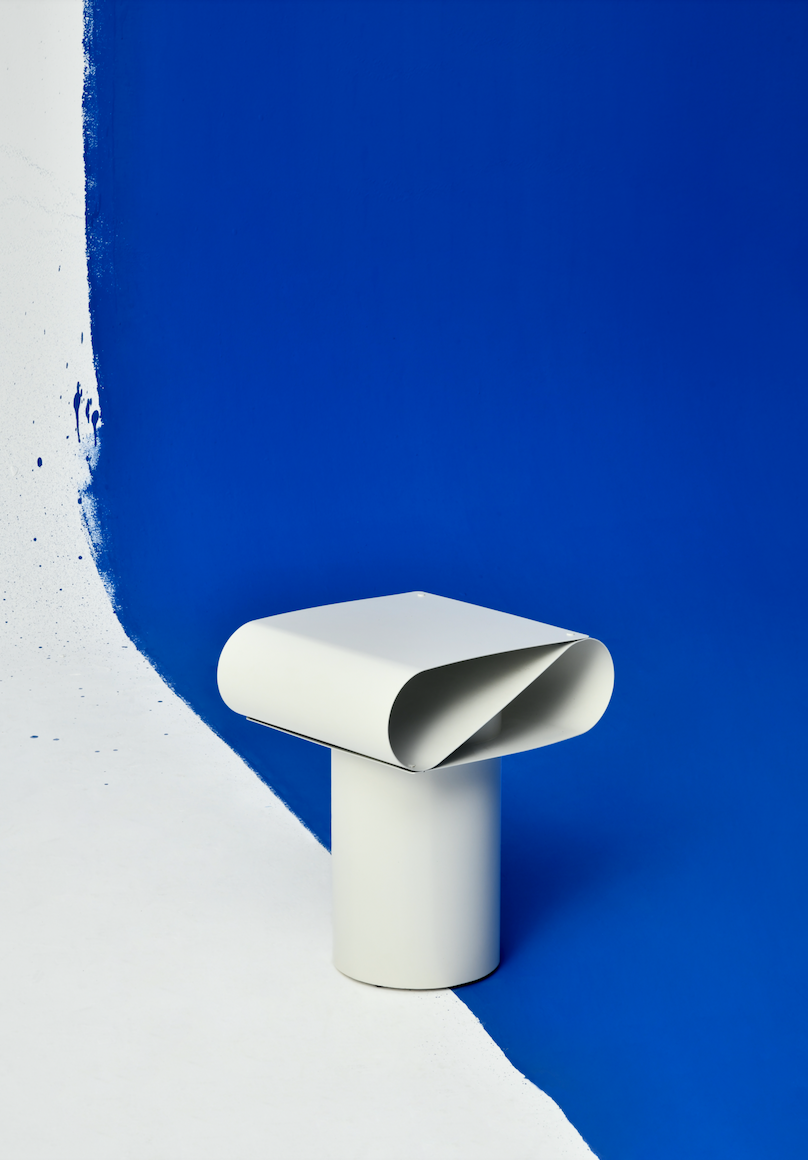

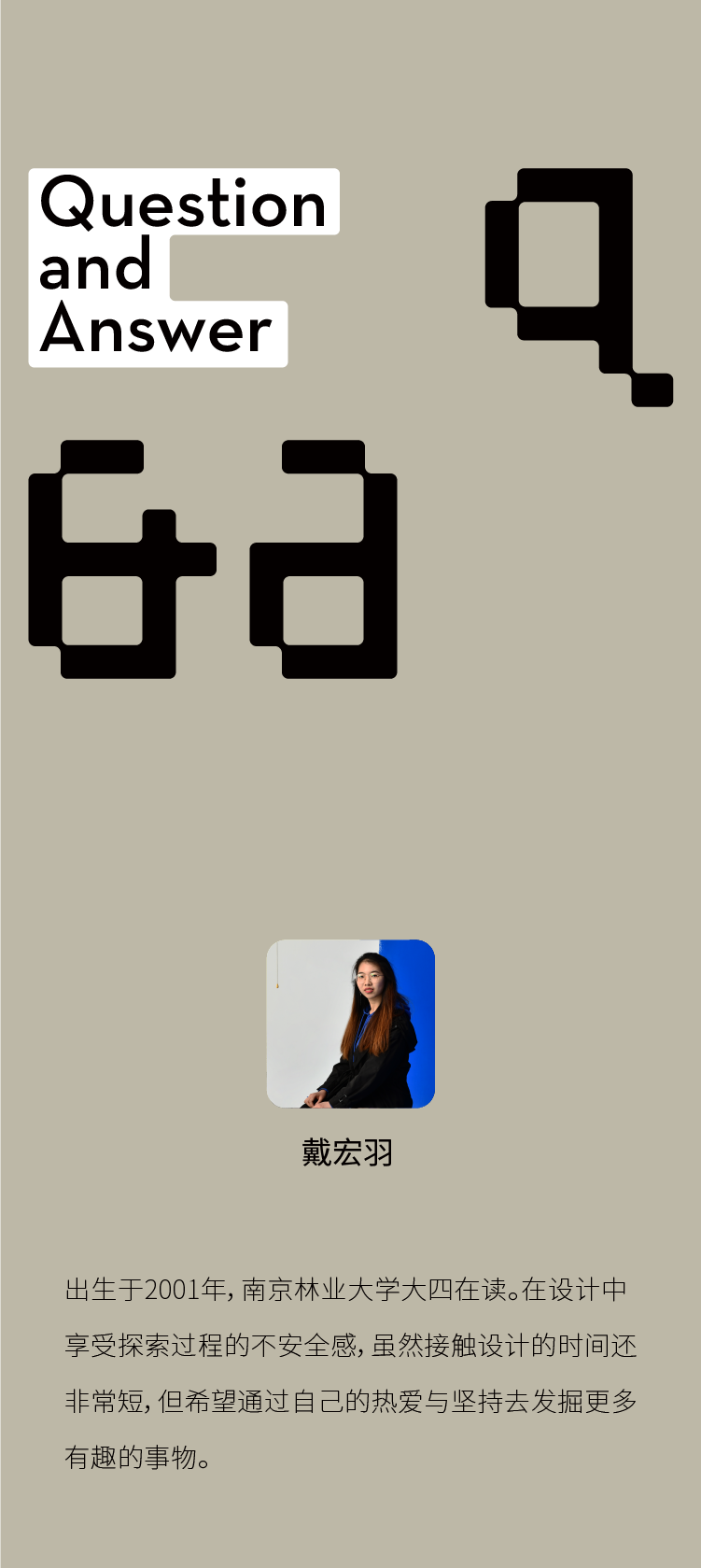
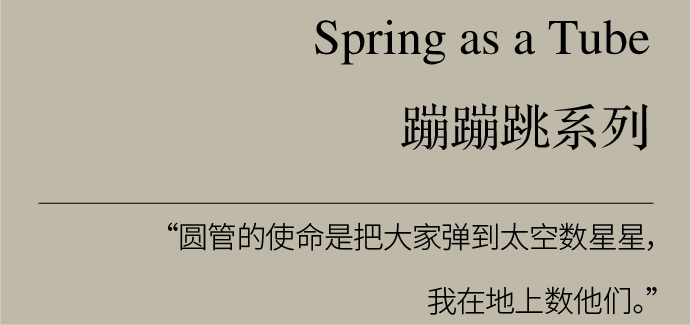
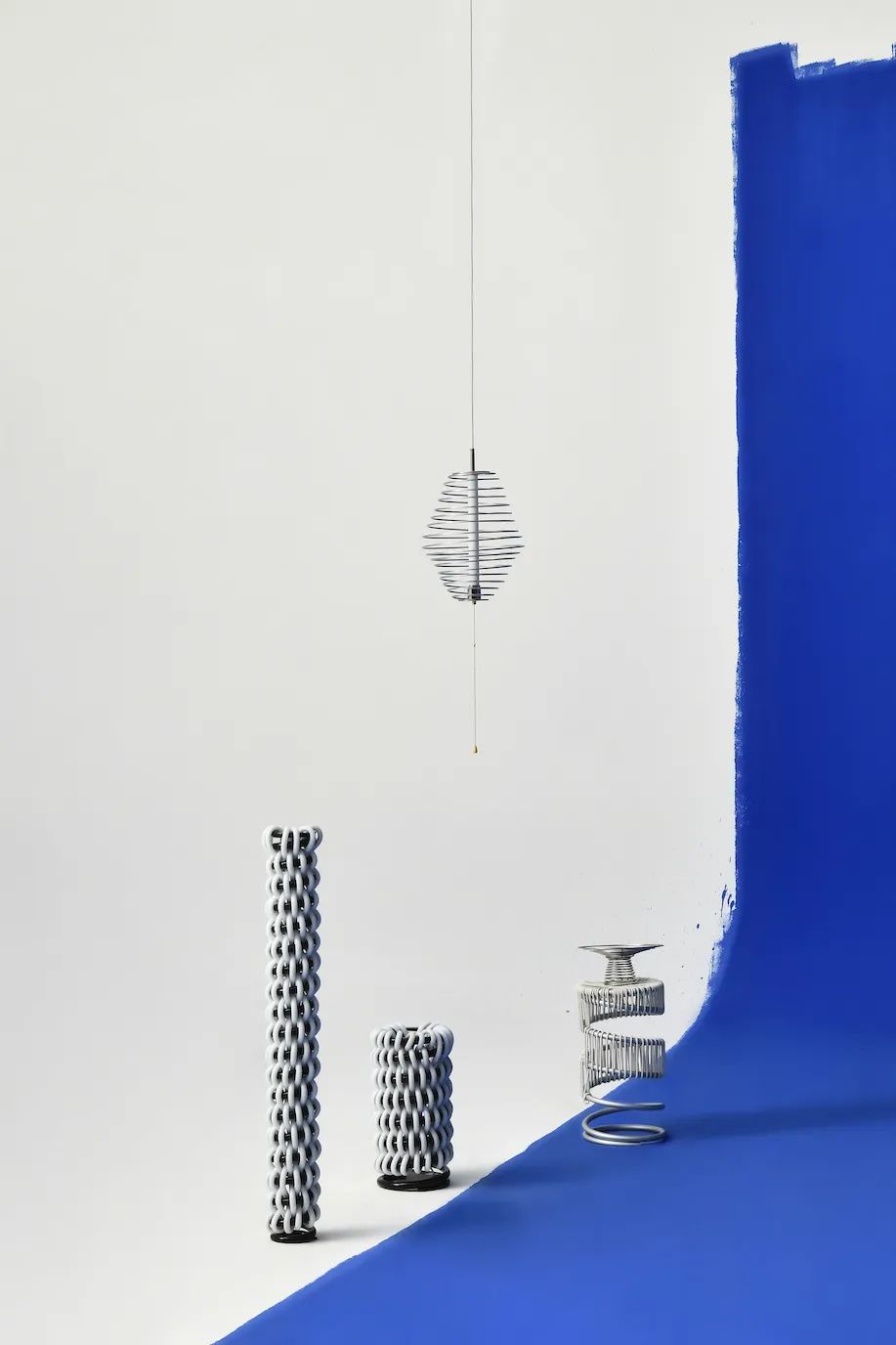
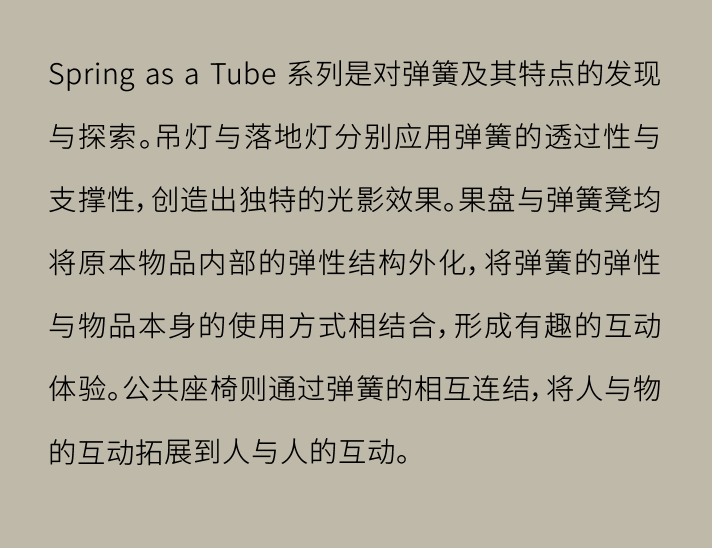
IDEAT: What was the first thought that popped into your mind when you got the proposition "The Mission of the Round Tube"?
Dai Hongyu : The first thought is: why is it a "mission"? "Mission" is an awe-inspiring word, it underscores a necessity and makes me have to take it more seriously. During the design process of this piece, I kept asking myself: "Can this be called mission?"
IDEAT: Is the final design a continuation of the original idea? What is the specific process of the development of this design motivation?
Dai Hongyu : The final design comes from the original idea, but it is an unexpected result.
The first workshop stage was a stage where my thinking was greatly impacted. Starting from the discovery of circular tubes in life, I observed and recorded many "circular tubes" in life that are not often noticed, these discoveries are interesting, but when I try to convert them into designs, everything is not simple . So I changed my thinking, started from only one direction, went to practice, and found inspiration in the process of playing with materials. Among the many discoveries I was impressed by the properties of the spring, I chose to take this round tube a step further. After several stages of making small models, enlarging, and proofing, and modifying details such as concepts, materials, and structures countless times, the final design was produced.
For me, the whole design process is unpredictable, every step is a new attempt, and the results are mostly unexpected.
IDEAT:关于你的作品,是否可以给我们一个你觉得最贴切的形容?
戴宏羽:让每个人都想弹一弹!
IDEAT:你觉得自己的设计中最值得一提的“亮点”是什么?
戴宏羽:万物皆可弹!
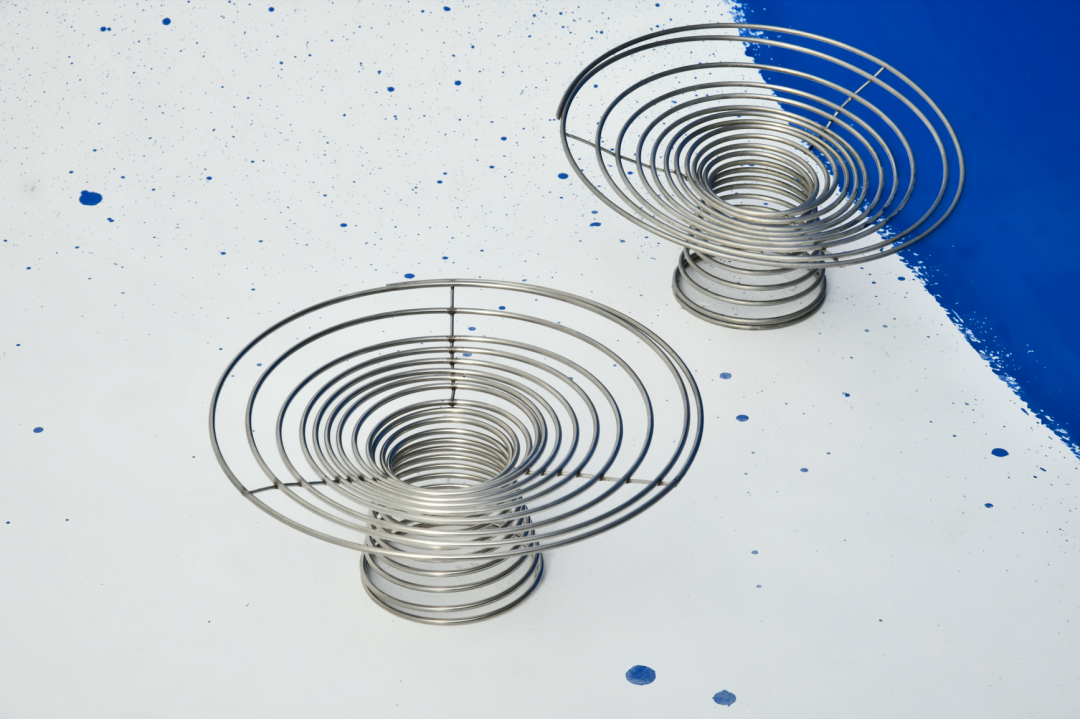
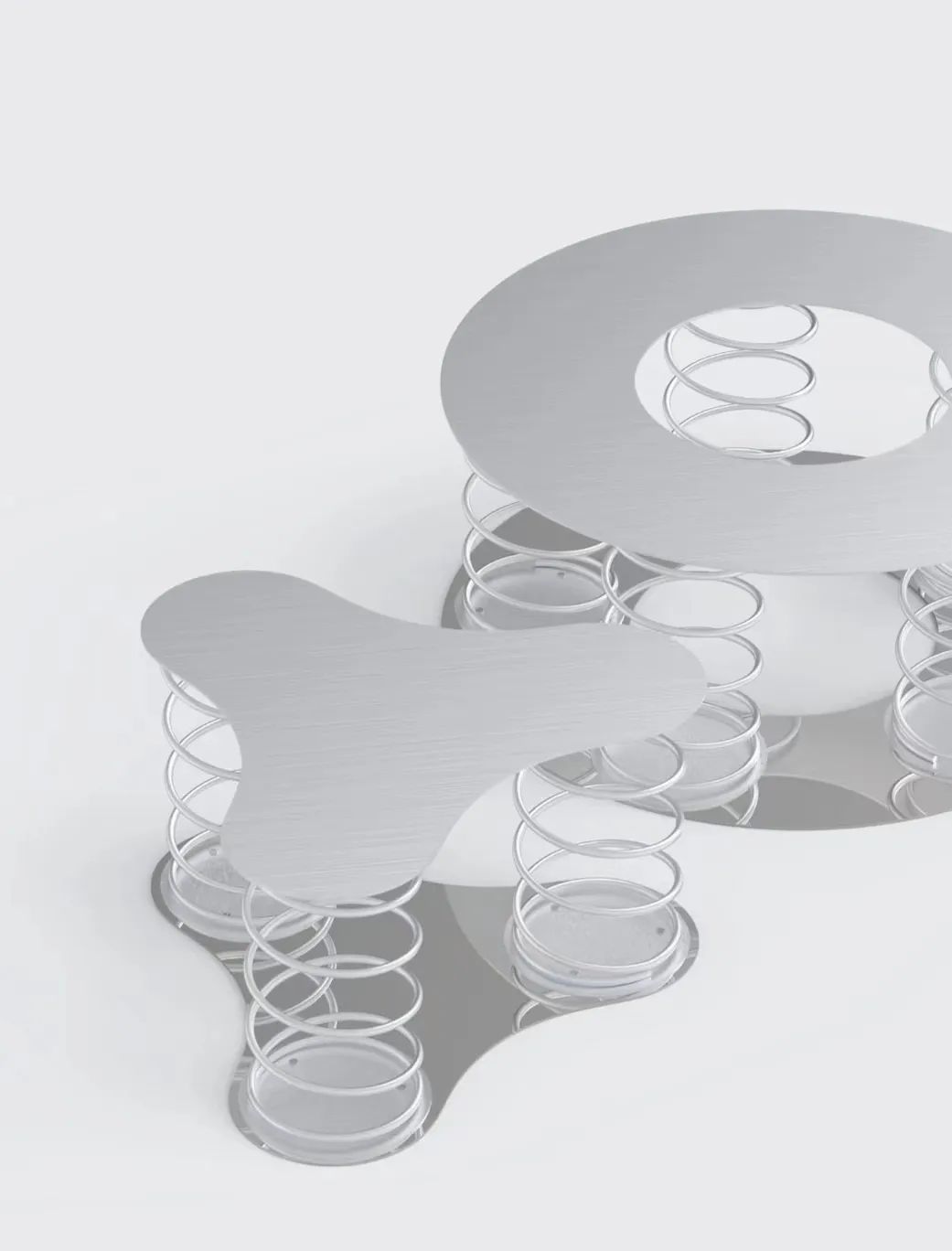
IDEAT:在四个月的创作时间里遭遇的最大挑战是什么?又是如何解决的?
戴宏羽:我的创作时间有八个月之久。由于在各方面都缺乏经验,整个过程都显得困难重重。尤其是在打样阶段,因为之前的设计都是异形弹簧,并且体量较大,几乎所有产品都找不到愿意打样的工厂。毫无经验的我在尝试与十几家弹簧厂沟通后依然无果,而最初设定的打样完成时间也迫在眉睫,于是我决定从工厂可以帮我完成的工艺上出发,重新审视之前的设计,不断地在概念与工艺之间寻找平衡,直到6月份还在进行新的尝试和打样。八个月的创作时间里,我一直在试错并成长。
IDEAT:这次的作品是否体现了你一贯的设计思维?能具体展开讲讲吗?
戴宏羽:我享受设计探索过程中的不安全感,喜欢从玩材料和动手尝试中获得乐趣和灵感。在动手制作弹簧模型的阶段,朋友都把我称作“弹簧手艺人”。埋头做弹簧的那段时间里,我暂时抛弃“这个东西又什么用”的想法,把自己完全沉浸在做出新弹簧的快乐之中。我拿着铁丝漫无目的地摆弄,做出各式各样的弹簧,后来又加入了热缩管、棉线等材料,去控制弹簧的特性,每一件新的弹簧都能衍生出更多有趣的其他形式。当最终把做好的一箱弹簧摆在桌子上的时候,我发现自己已经对“它们可以成为什么?”这个问题有了很多答案。接下来就是将它们放大,换用更契合实际生产的材料,验证其结构的可行性,思考并完善细节,在放大的过程中也是对上一阶段想法的更进一步探索,对制作出的杂乱无章的模型的扬弃。
IDEAT:你希望你的设计能向人们提供什么样的价值?
戴宏羽:我希望我的设计可以成为连接人与人、人与物的媒介,以新的视角对待材料和构件。我喜欢通过设计为大家带来愉悦的互动体验,让每个人看到这些物品之后都想去试一试。
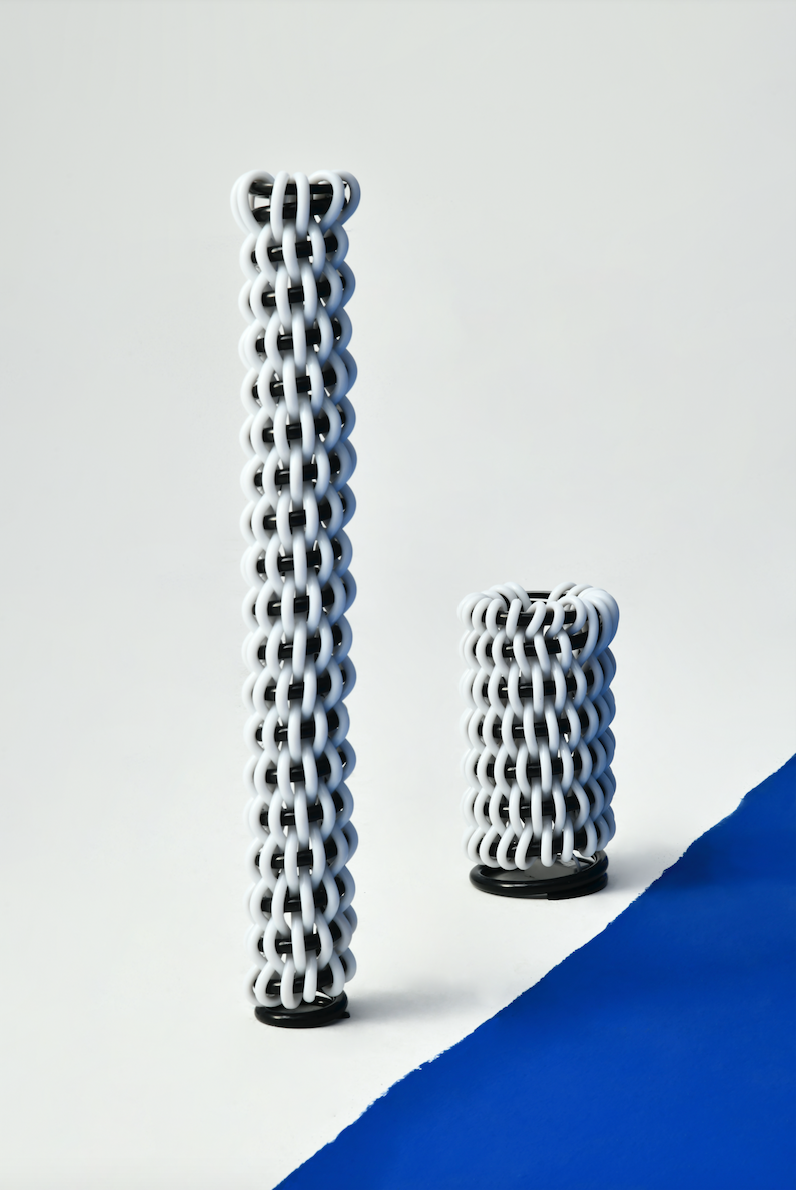
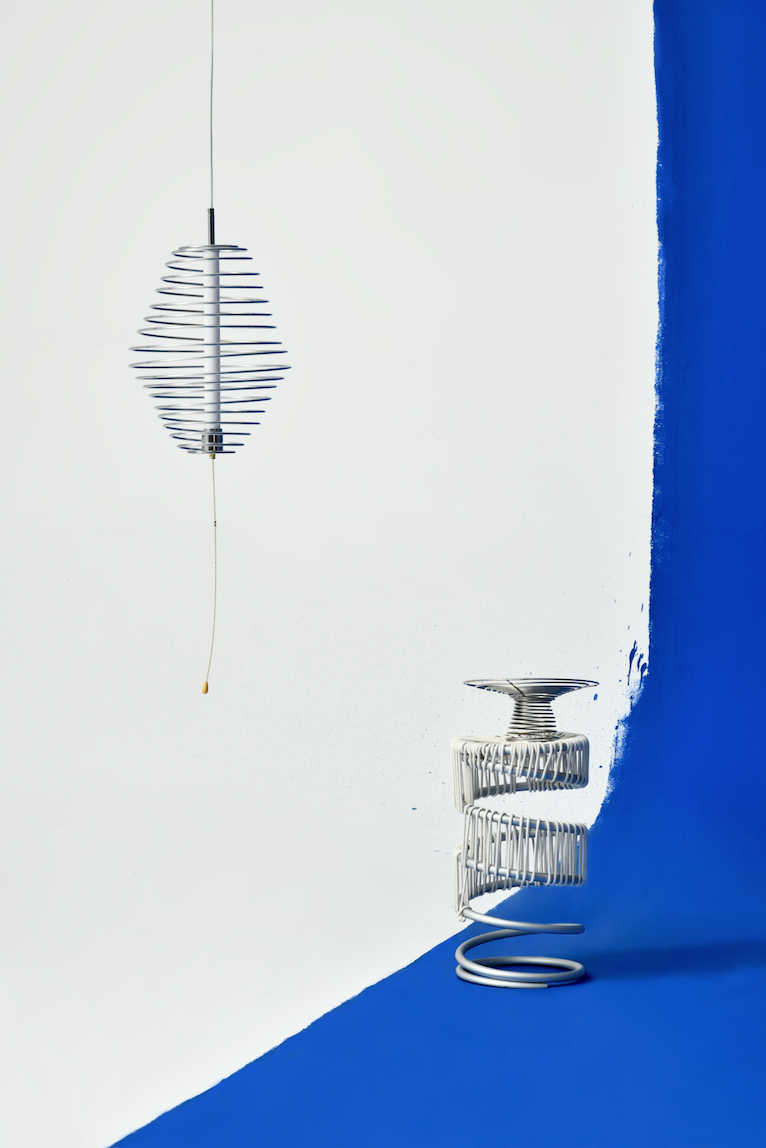
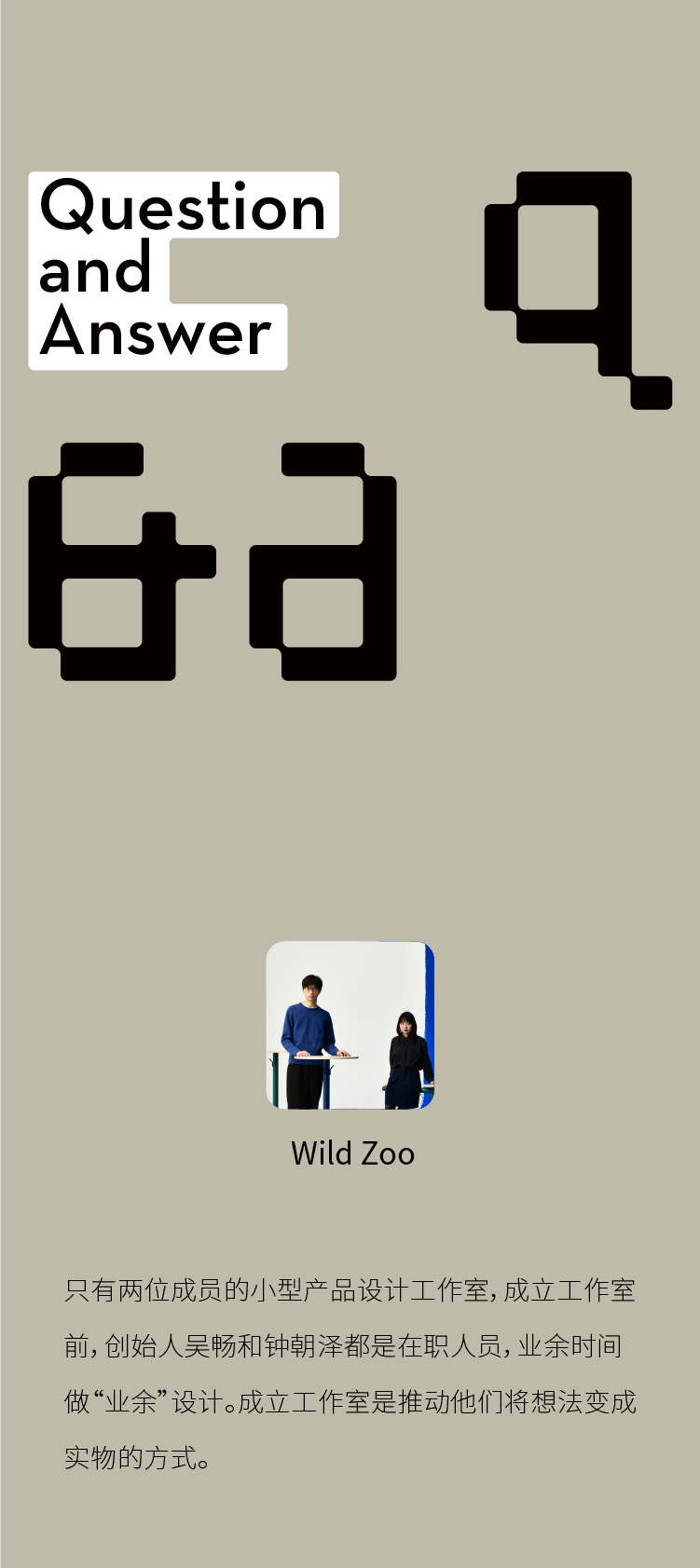
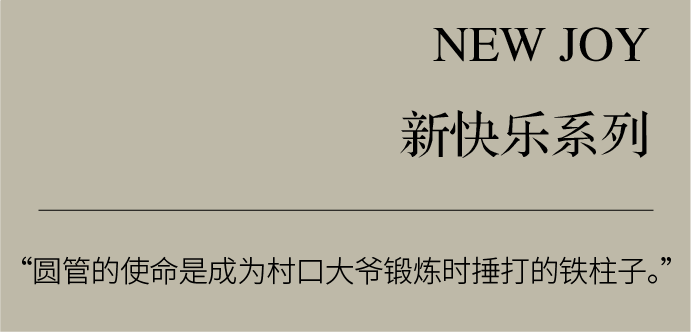

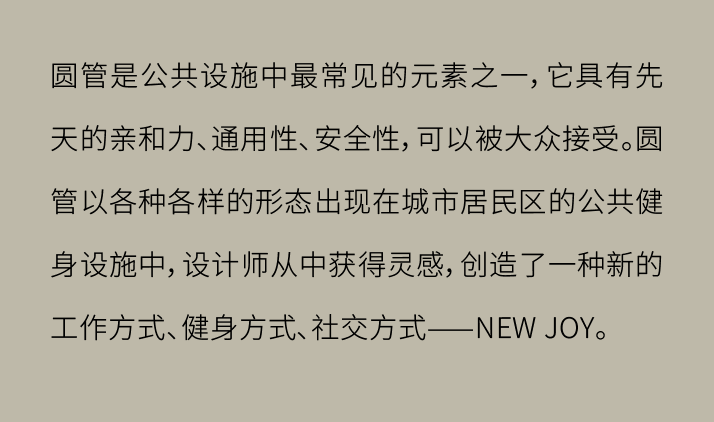
IDEAT:在拿到“圆管的使命”这个命题时,闪入脑际的第一个想法是什么?
Wild Zoo:其实这套方案是我们之前偶然一次在喝咖啡的时候想到的,但一直没有着手去做。面对“圆管的使命”这个命题的时候,我们第一时间就想到了之前的这个想法。
IDEAT:最终的设计与最初的想法是有延续性的思考吗?这个设计动机发展的过程具体是怎样的?
Wild Zoo:最终的设计和最初的想法之间有横向的延展。New Joy“新的公共圆管设施”,这样的点子其实是很开放的,我们根据展览效果在现场增加了像公共围栏的坐具。
IDEAT:关于你的作品,是否可以给我们一个你觉得最贴切的形容?
Wild Zoo:轻松、好玩,这很关键。我们的理念是"FFF" ,就是"Fun Follows Function"乐趣追随功能。
IDEAT:你觉得自己的设计中最值得一提的“亮点”是什么?
Wild Zoo:熟悉、好玩、一边吃甜品一边企图运动瘦身的矛盾心理。
当然还有简单,造型的简单、理解的简单,你可以一眼就知道它是干嘛的,应该放在什么环境里,也能一眼就看到它新在哪里,这种没有认知隔阂的状态也是简单的。
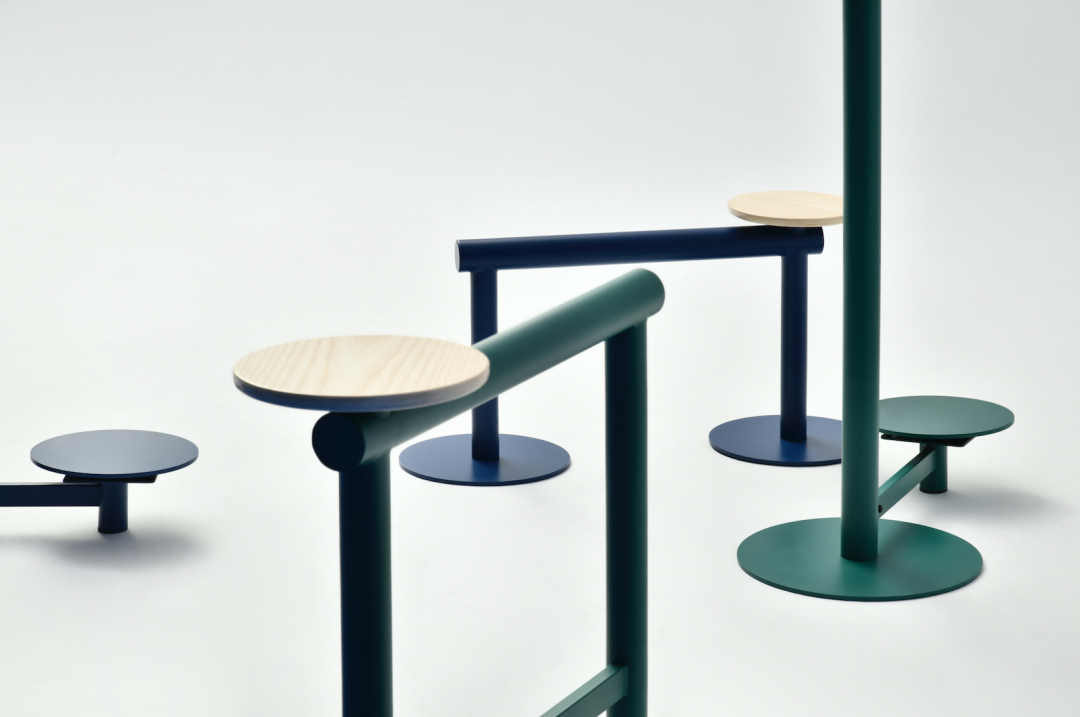
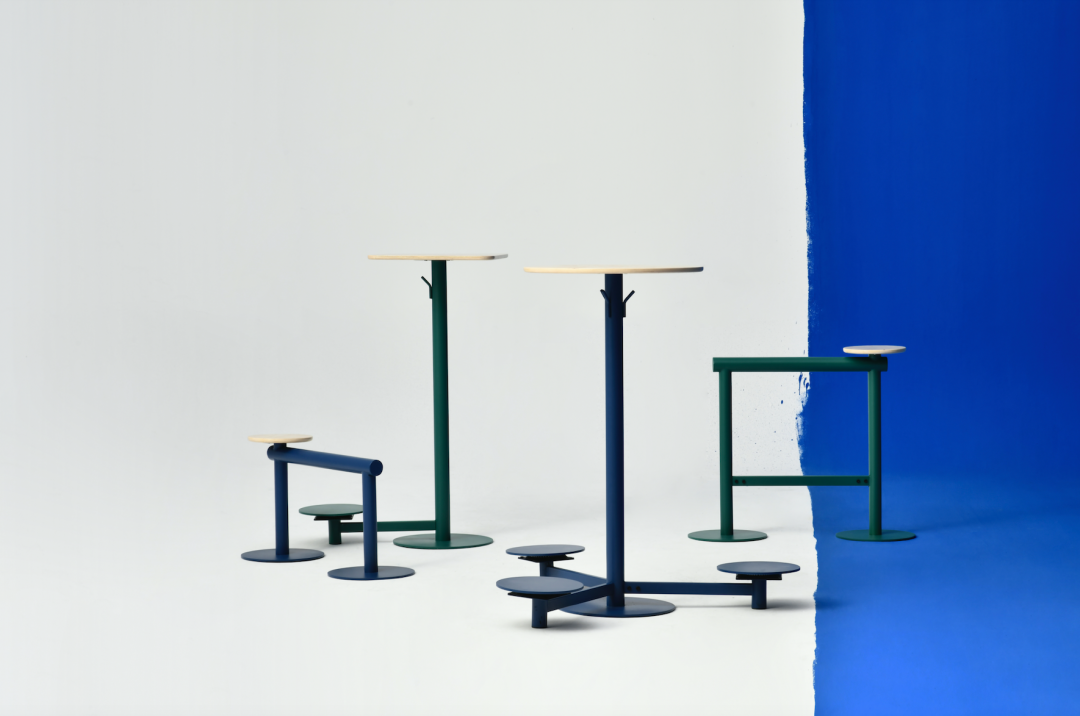
IDEAT:在四个月的创作时间里遭遇的最大挑战是什么?又是如何解决的?
Wild Zoo:我们保持了在工作中的习惯,加工、包装运输、成本等问题基本都是可控的。但是,这是我们第一次独自做一套这么大的产品,没有之前在学校时的设备,也没有公司采购和工程同事的协助,这本身就是一个挑战。
IDEAT:这次的作品是否体现了你一贯的设计思维?能具体展开讲讲吗?
Wild Zoo:是的,这次的作品看上去做的非常简单,在这个作品上除了需要服务于功能或者乐趣的结构,没有其他主观性的添加,我们想尽量保持创意的纯粹。同时我们把制作的成本控制在比较低的范围,没有把参展作品制作成只有极少数人能用得起的昂贵物件。我觉得这也是我们的设计的原则之一。
IDEAT:你希望你的设计能向人们提供什么样的价值?
Wild Zoo:我们希望我们的设计能给人传递实在的乐趣。但我们也希望未来有机会能做一些更深入的设计,通过产品为人们提供新的视野和体验。
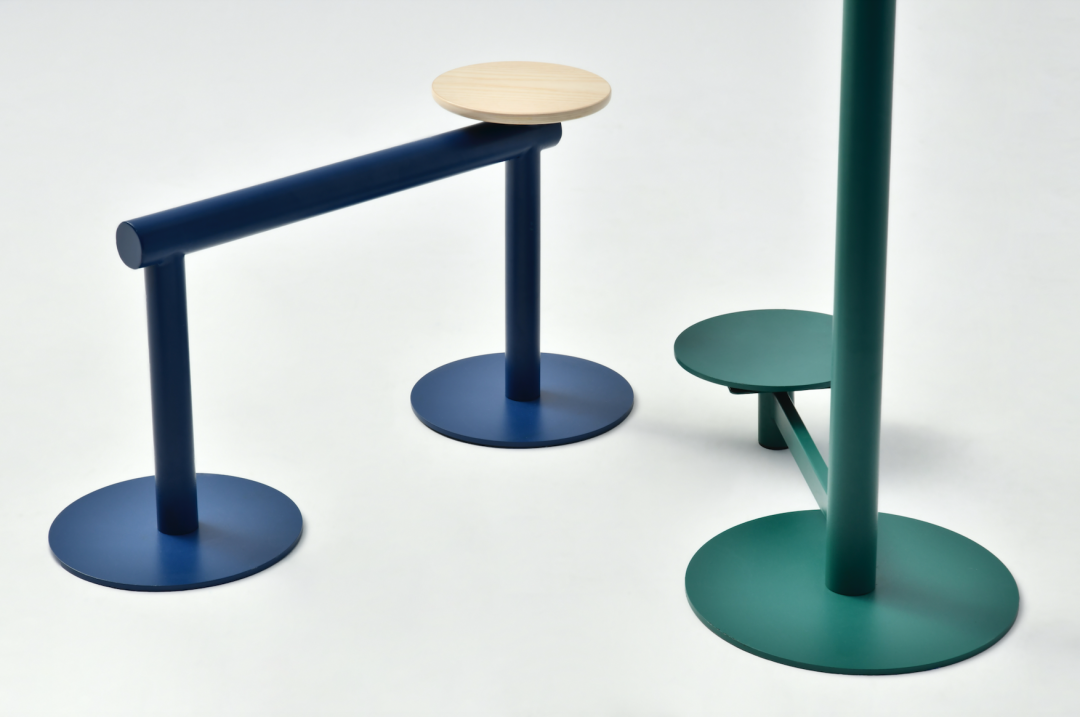
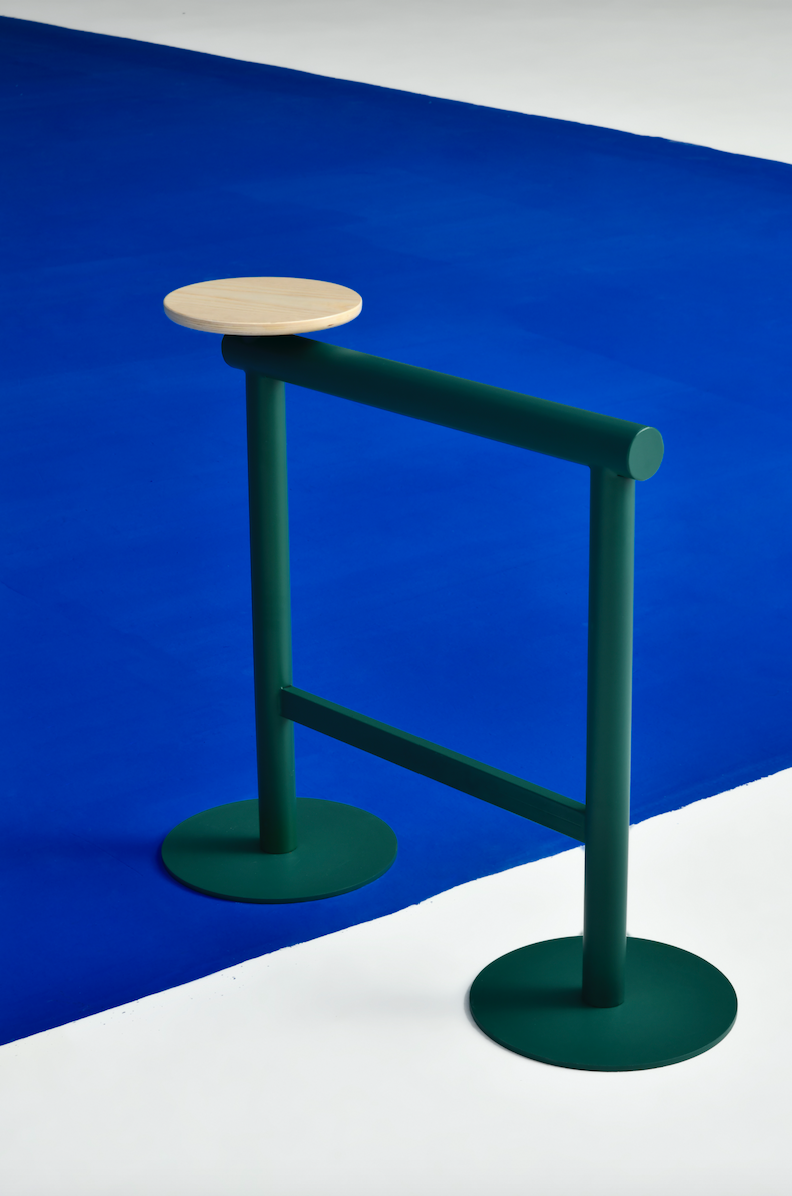
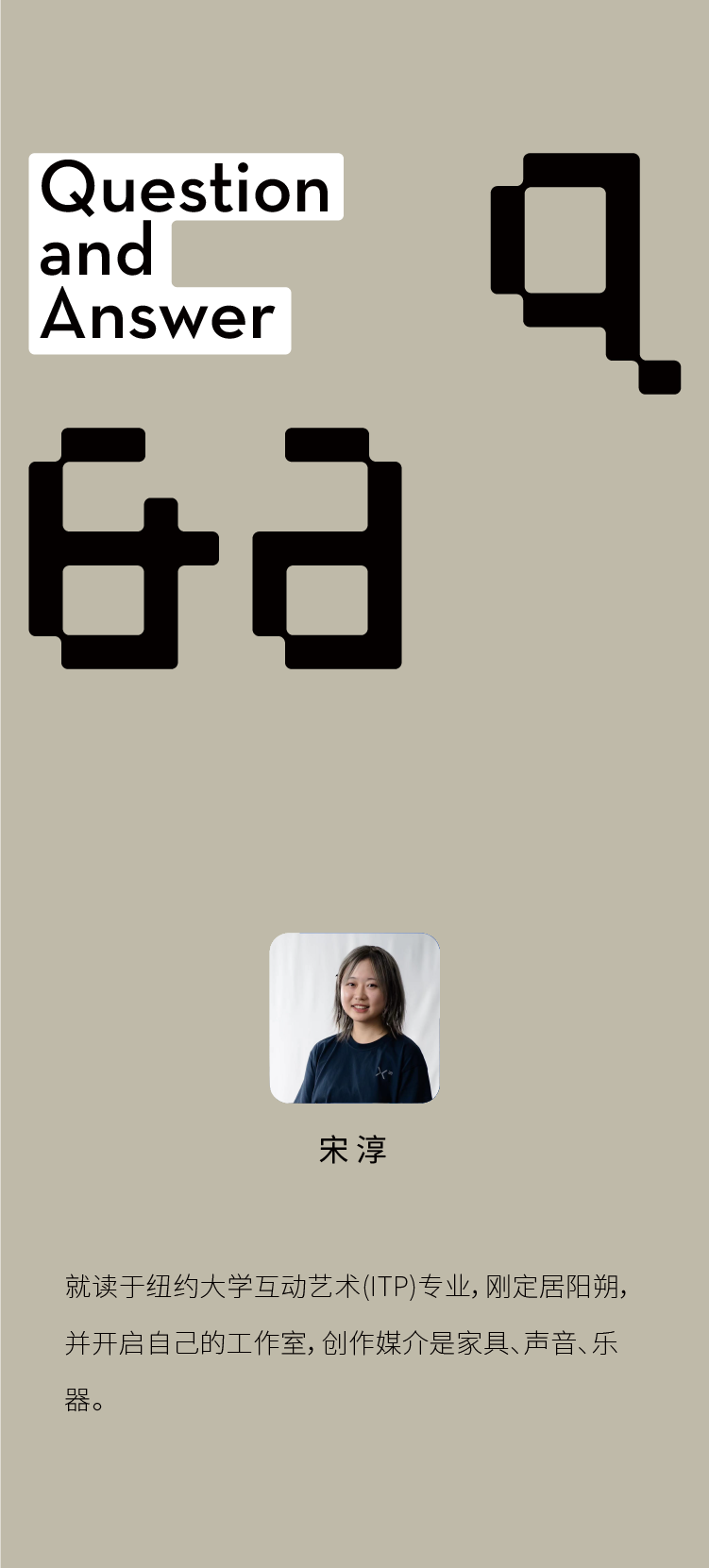
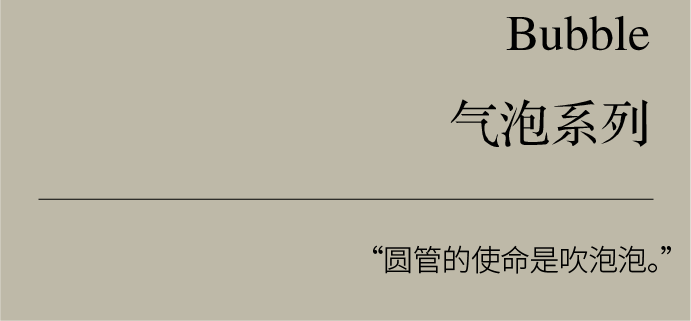
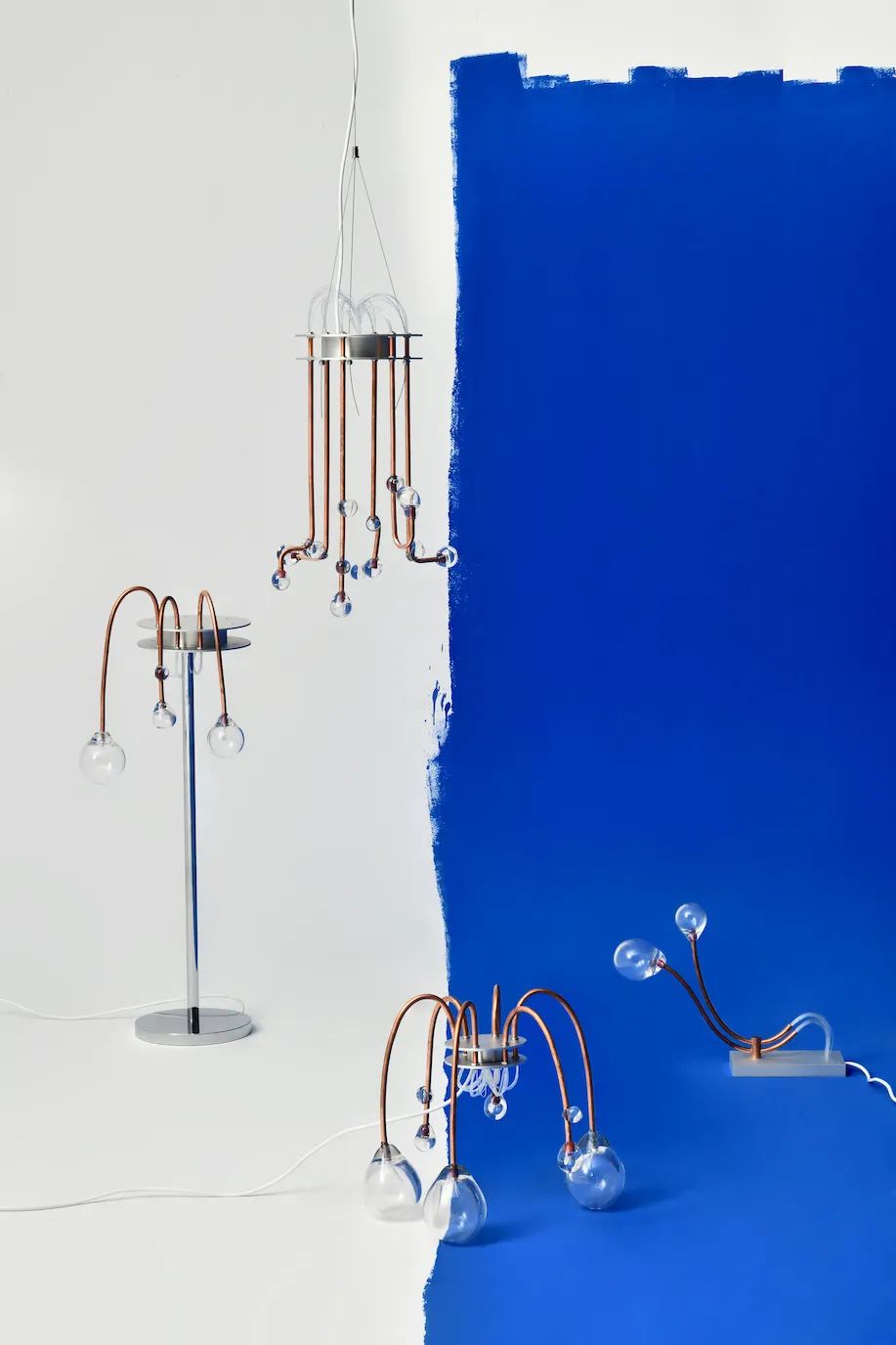
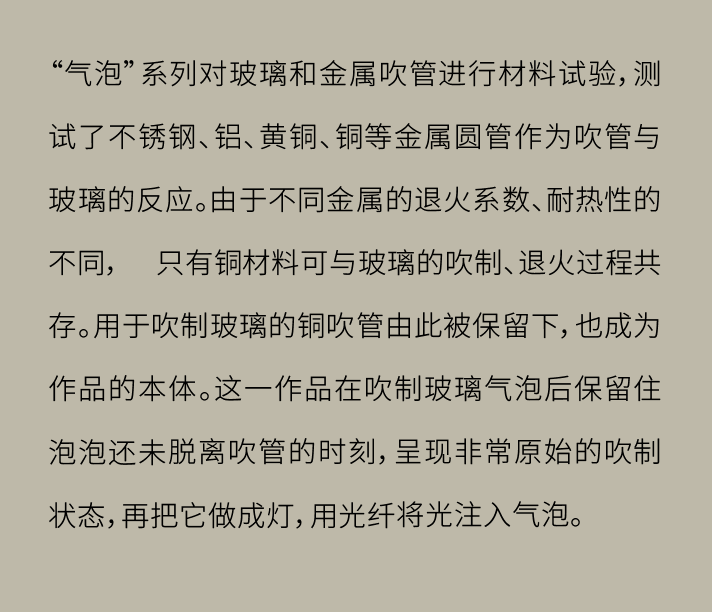
IDEAT:在拿到“圆管的使命”这个命题时,闪入脑际的第一个想法是什么?
宋淳:当时,我直觉地想到圆管是空心的、它和传递的动作相关、内部总是流动的。比如蒸笼传递热气、电线传递电能,甚至是木柱、石柱,都是在汇聚和传递力流,“立木顶千钧”,以此支撑着建筑。我发现圆管总是用来传递着不具实形的能量。我自身也一直很关注“能量”这个主题,便自然而然有了最初的设计想法。
IDEAT:最终的设计与最初的想法是有延续性的思考吗?这个设计动机发展的过程具体是怎样的?
宋淳:我对这个项目的思路不可思议地和最开始的直觉连接。我想要将“圆管传递能量”这一点显现化。玻璃的吹制就像是人口中的气息实形化的过程,将一股不可见的能量化成吹管另一头玻璃。圆管、能量、传递和玻璃串起这个动机主题。吹泡泡——这个动作是通过呼吸创造的。注入呼吸在神话里是激活生命的一个神技,吹制玻璃的过程正如用注入气息的手法赋予一件工艺品鲜活的生命。这个作品在吹制玻璃气泡后保留住泡泡还未脱离吹管的时刻,呈现非常原始的吹制状态,再用光纤将光注入气泡,把它称作“灯”,完成赋予呼吸的动作。
IDEAT:关于你的作品,是否可以给我们一个你觉得最贴切的形容?
宋淳:设法保留玻璃泡泡是将金属圆管视为一种材料类别的研究。
IDEAT:你觉得自己的设计中最值得一提的“亮点”是什么?
宋淳:是我没控制的部分,是紫铜管在高温和玻璃的包裹下变成美丽鲜红色的意外惊喜,像是从铜管里渗出的血,被玻璃放大了。
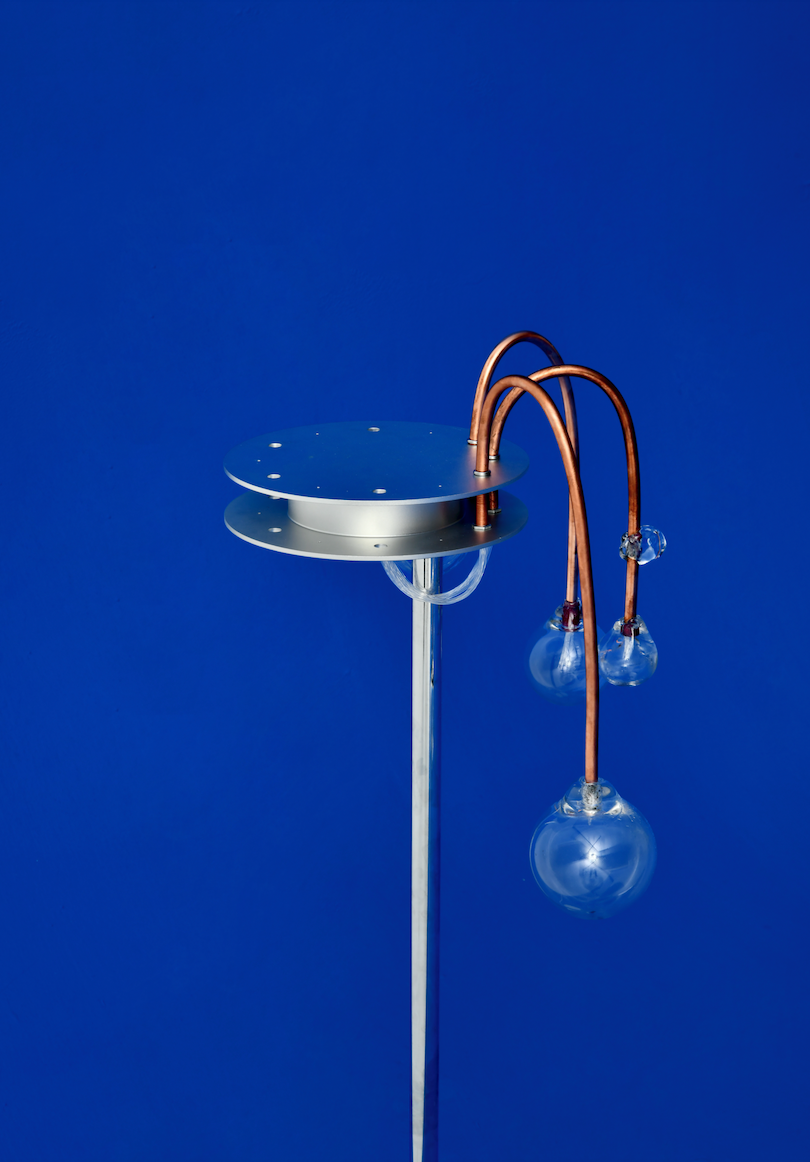
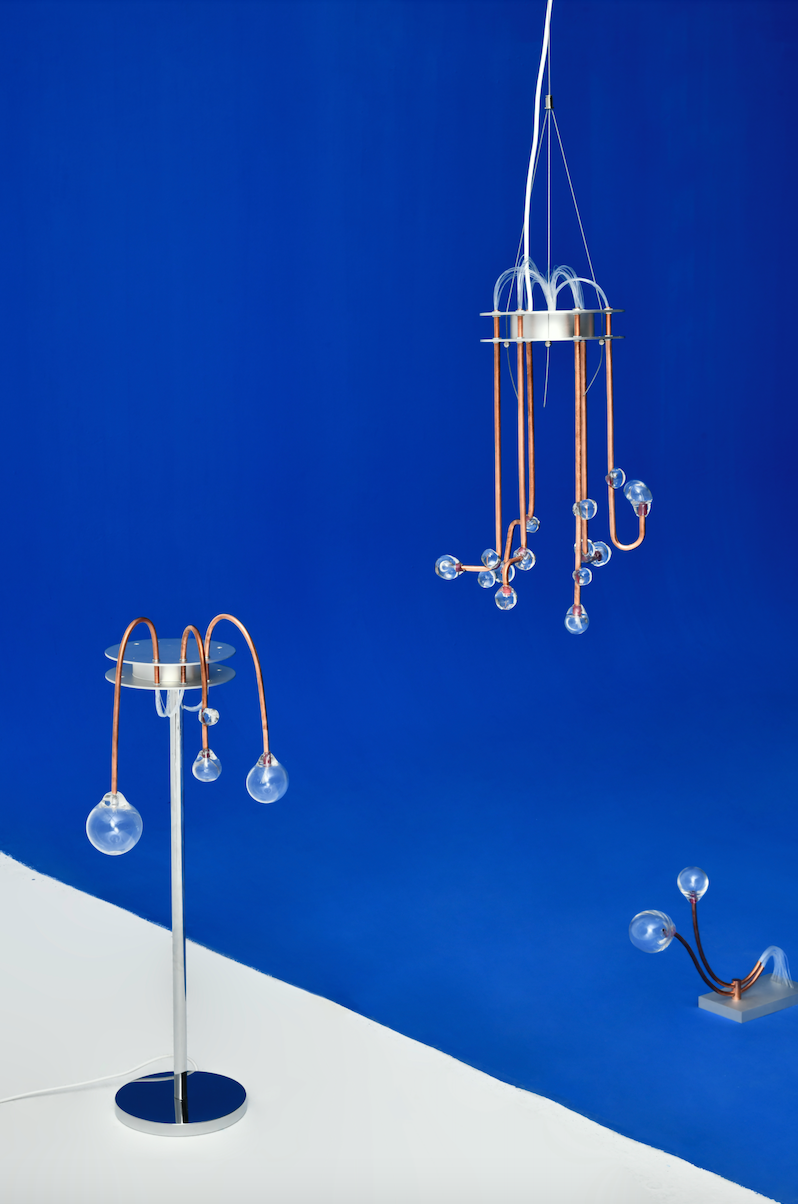
IDEAT:在四个月的创作时间里遭遇的最大挑战是什么?又是如何解决的?
宋淳:留住泡泡是最难的,在于要寻找到让金属管和玻璃共存的方法。我实验了不同材料、大小、厚度和形状的金属管,但总会遇到不同的难题。我一度在想是不是不该为了一个浪漫的想法,去违背玻璃和金属并不相融的物理特性,初期陪我做实验的玻璃师傅甚至比我还挫败。好在后来我找到了退火系数和耐热性都最合适的紫铜,但和玻璃退火系数相似也意味着这种材料导热太快,单独用铜管吹制太烫嘴,又想办法定制了不锈钢的吹嘴,如何不漏气成为做独立吹嘴的新问题…
在山东淄博的西冶工坊打样期间,我会去五金店和摩修店请教师傅在高温下保护金属的方法、和修空调的师傅学习铜管的特性……最后才能成功保留下了吹泡泡的瞬间。但为了留存玻璃,我透彻了解的材料不是玻璃本身,而是铜管。铜管太折磨我,它柔软、脆弱、导热快、又容易被腐蚀,但这些后来让我觉得它就是如其所是地存在,我竟意外地爱上了铜管。
IDEAT:这次的作品是否体现了你一贯的设计思维?能具体展开讲讲吗?
宋淳:从造物流程上,我喜欢以轻松的方式去做,直接动手在空间中摆弄材料,在过程中成型。这样的相处过程能让我从材料本身的逻辑去理解它,而不是用几根线条。
IDEAT:你希望你的设计能向人们提供什么样的价值?
宋淳:以人工的技艺去显现自然,我希望我的作品能提供另一个看自然的眼睛。如果其他的金属可以保留下泡泡,我不会找到紫铜,这么多金属中也只有紫铜可以在“吹泡泡”的过程中变色成美丽的鲜红色,我觉得这个材料所导向的唯一结果真是太好了。记得那天我从玻璃工坊出来,感到自己像发现了自然的秘密般惊喜。
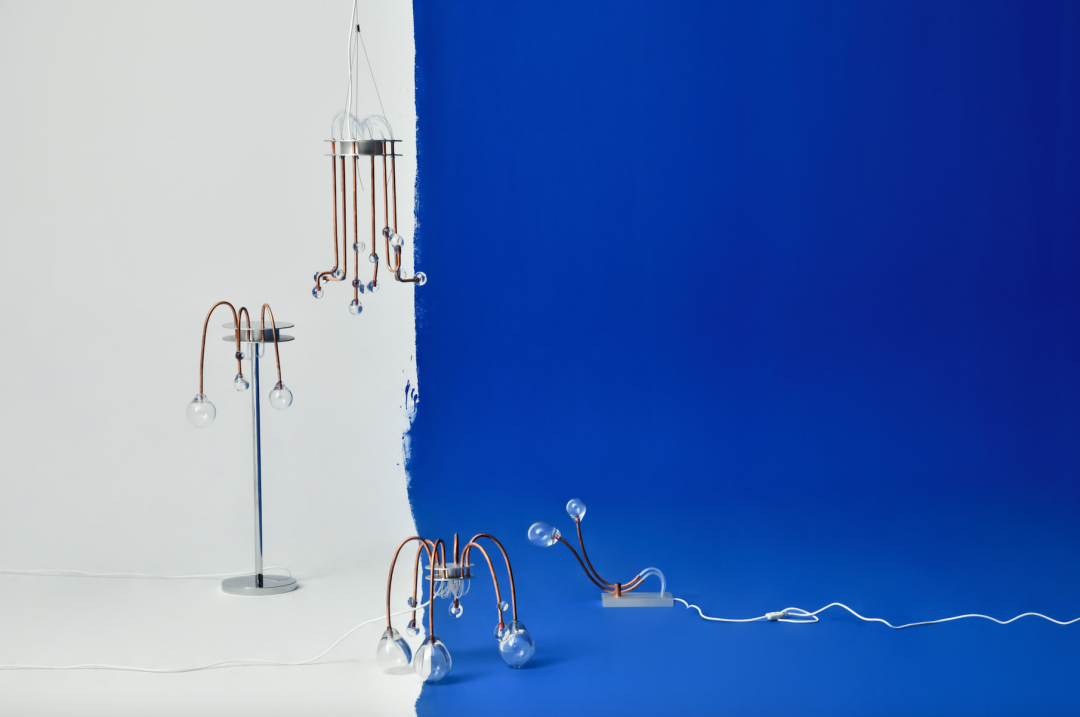
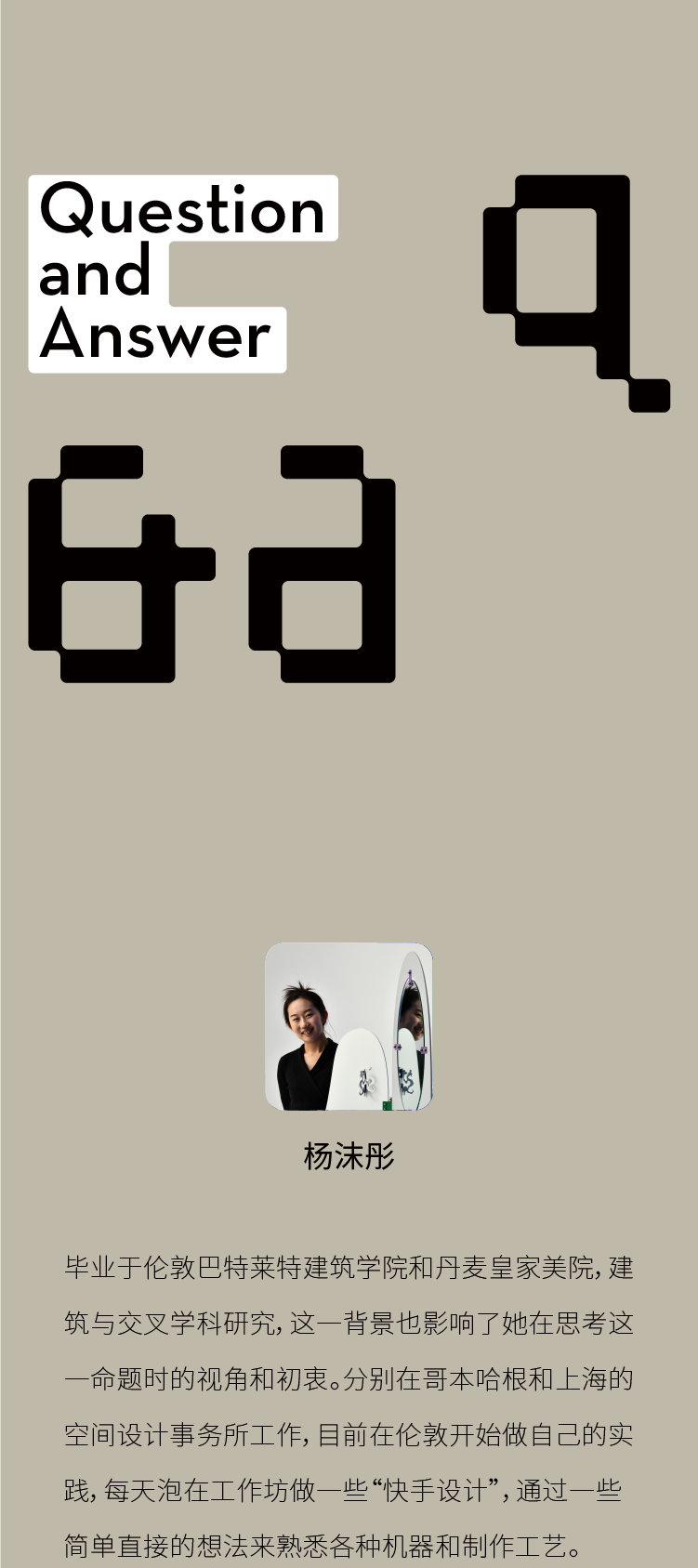
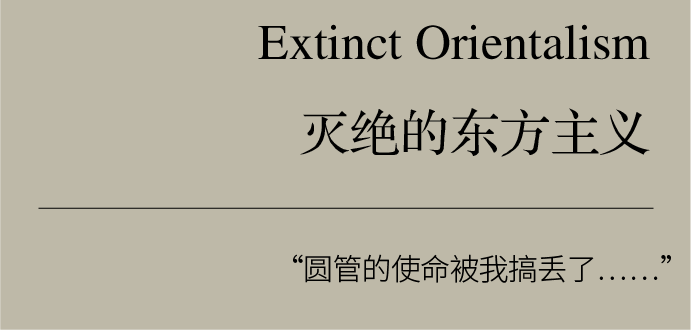
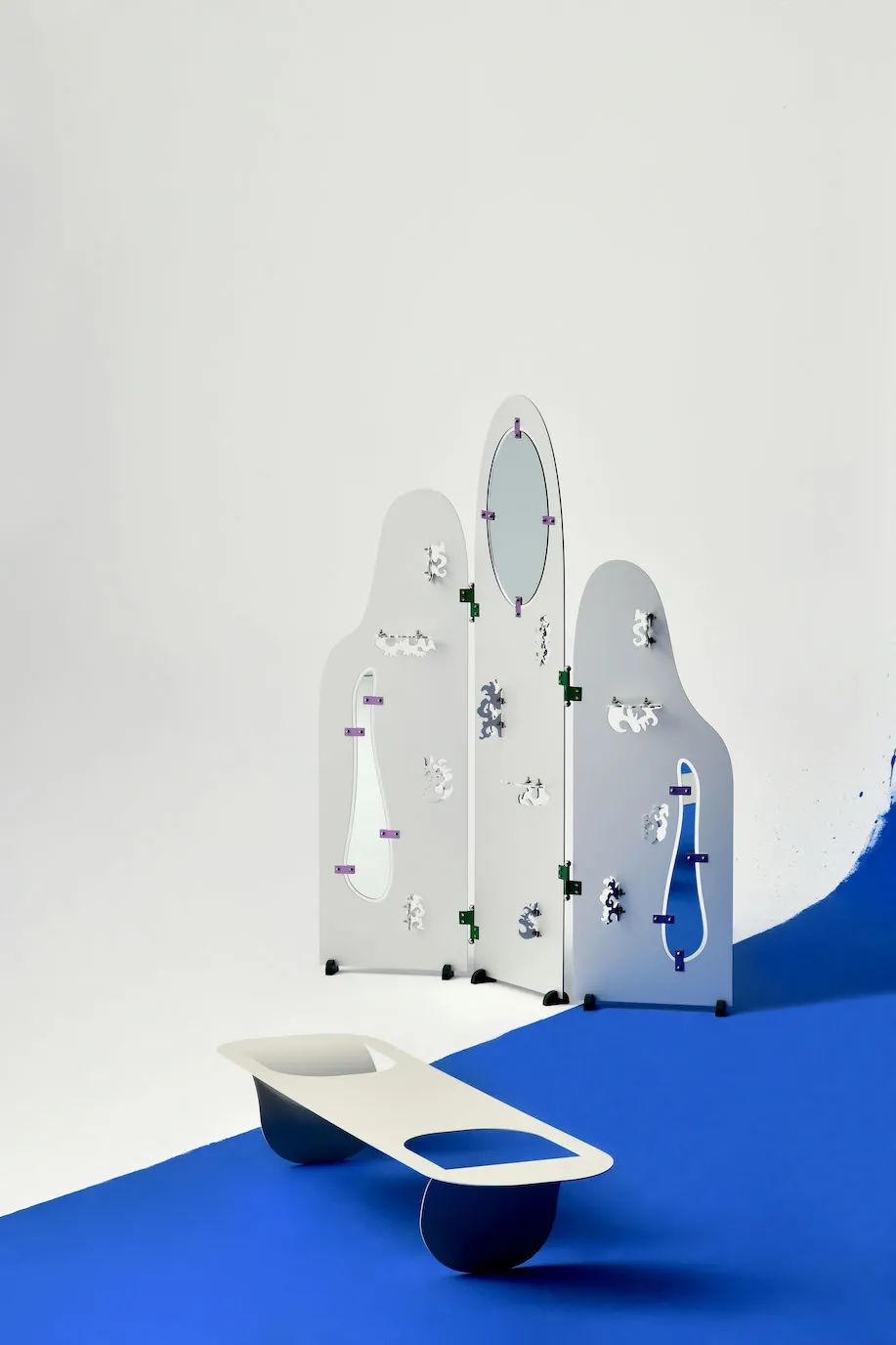
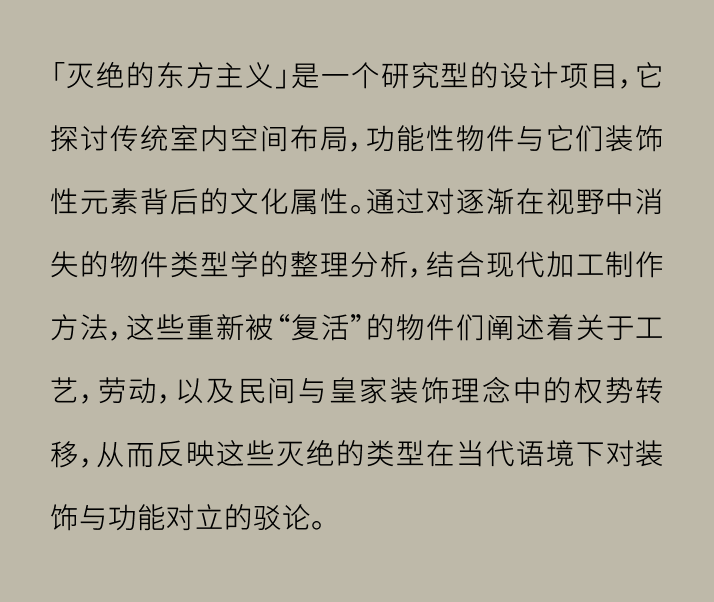
IDEAT:在拿到“圆管的使命”这个命题时,闪入脑际的第一个想法是什么?
杨沫彤:当我想要观察生活中以“圆管”形式存在的物件时,发现它们其实无处不在。于是我想到了Charles and Ray Eames 在1977年制作的短片 “Powers of Ten” (十的次方)。整个影片从一块餐布的度量尺度延伸到10的24次方,一张一亿光年前的宇宙卫星图,再回到10的 负15次方,一粒质子逐渐模糊的边缘。这种思考方式让我开始通过建立维度的方法重新观察身边以 “圆管”形式存在的物件,从而可以不受材料,工艺,和功能的限制看到现代社会在创造这些“圆管”形物品时的初衷。同时,这也引发我去思考我们是否真的需要设计更多的“圆管”,又是否有一个办法可以让我们重新观察和使用这些已经存在的“圆管”。
IDEAT:最终的设计与最初的想法是有延续性的思考吗?这个设计动机发展的过程具体是怎样的?
杨沫彤:蔡烈超老师开玩笑说我把圆管的使命搞丢了,的确,我在展览上最终呈现的作品看起来和“圆管”是没什么太大关系,(上文)提到的初衷实施起来对场地和展览的性质都很苛刻,因为它们要求和真实的环境产生联系,而不是以一个成品的形式摆放在展览空间里。但这一契机也让我可以将日常关注的话题和爱好结合起来,从而发展成一个研究型的设计项目,也就是大家目前看到的“灭绝的东方主义”。
对我来说整个设计过程都是不可预期的,每一步都是新的尝试,而结果大多都在预料之外。
IDEAT:关于你的作品,是否可以给我们一个你觉得最贴切的形容?
杨沫彤:后现代古董。
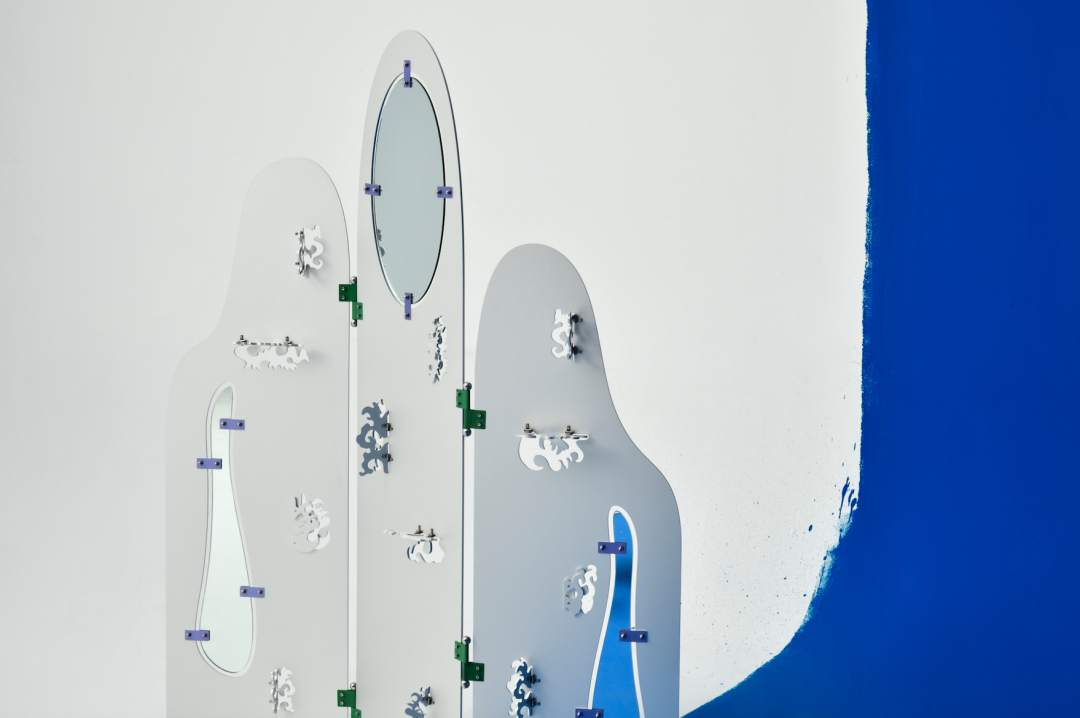
IDEAT:在四个月的创作时间里遭遇的最大挑战是什么?又是如何解决的?
杨沫彤:出于对预算和运输的考量,我选择了一家在深圳周边的工厂,而当时我人在上海,没办法亲自参与制作过程, 只能通过做1:10和1:1的模型去推敲一些细节,无法想象所有元素组合在一起的最终效果。很多在电脑模型里无法预估到的问题在我在产品拍摄现场第一次看到成品时出现了,我很狼狈地冒着暴雨跑了无数个五金店找螺丝。但其实我还挺享受这种在数码建模和真实物件翻译过程中产出的误差,这些快速直接的解决方法也产生了别样的美感。
IDEAT:这次的作品是否体现了你一贯的设计思维?能具体展开讲讲吗?
杨沫彤:以建筑思维来做物件,很容易从构造和制作的⻆度出发去思考设计,与其让观看者无法一目了然这件物品是如何制作的,我反而习惯把所有的构造裸露在外面,结构从而变成形式的和功能的一部分。我希望根据材料的特性使用得当的工艺做出适应它们自身条件的设计,而不是与它们产生对抗。这样也节省了材料和制作成本,减少了浪费。
IDEAT:你希望你的设计能向人们提供什么样的价值?
杨沫彤:我希望自己的设计可以为观看者带来很多不同层次的思考,它们既是对构造,比例和美学的尝试,也是一个记录思考过程的物理性呈现。就像这次探讨的屏⻛,本是一个因为功能逐渐消失在当代室内空间的物件,但它背后所关联的历史背景和装饰元素中的文化属性反而更值得人们去关注。
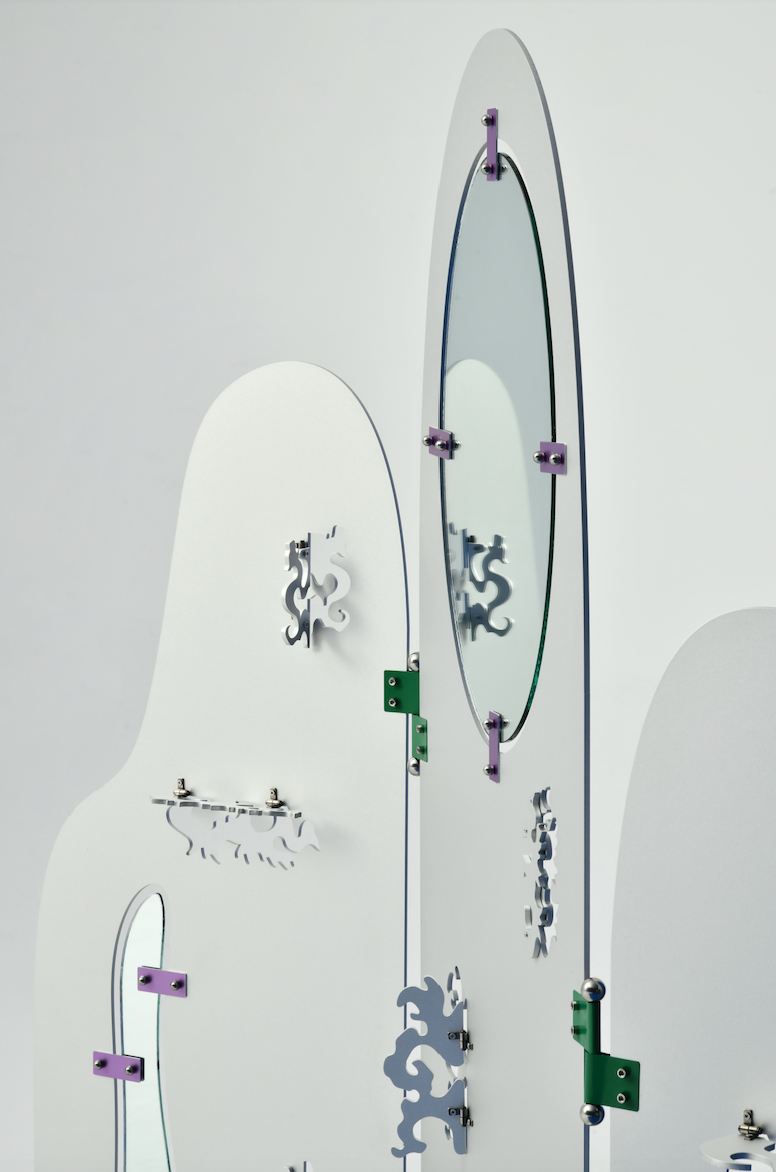
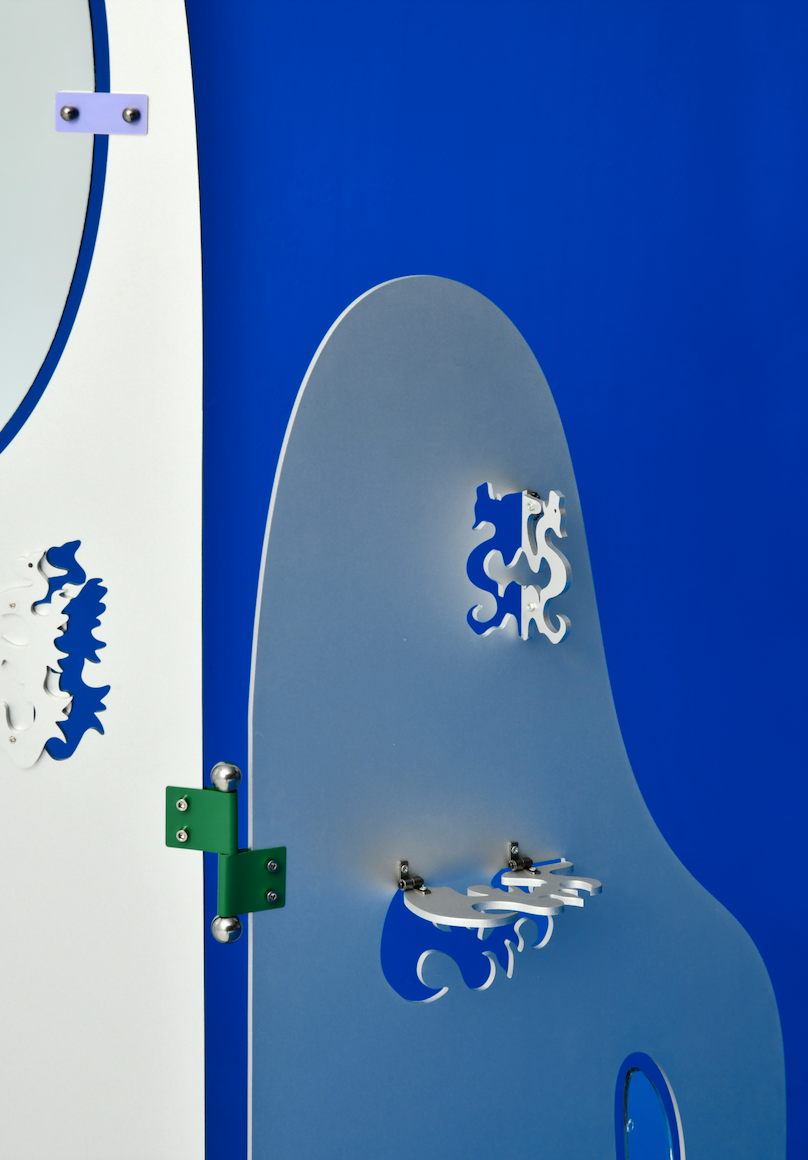
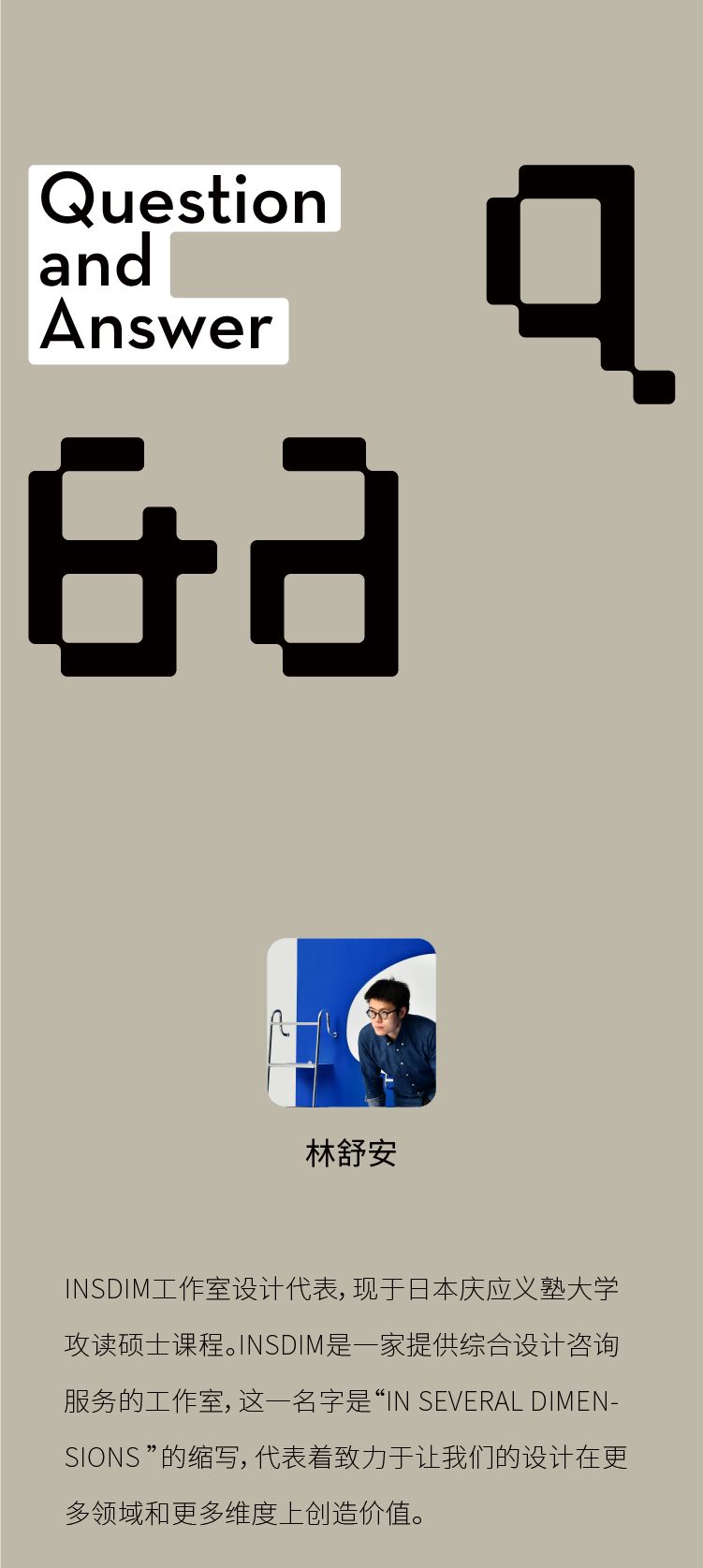
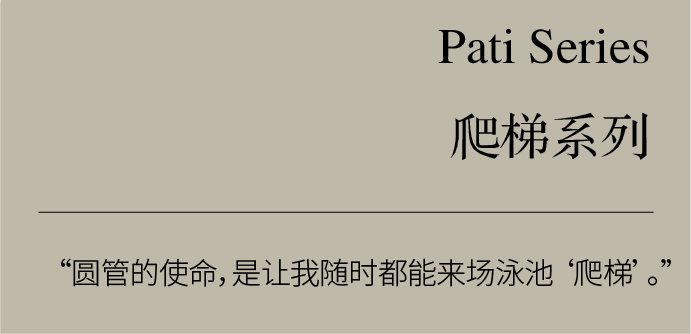
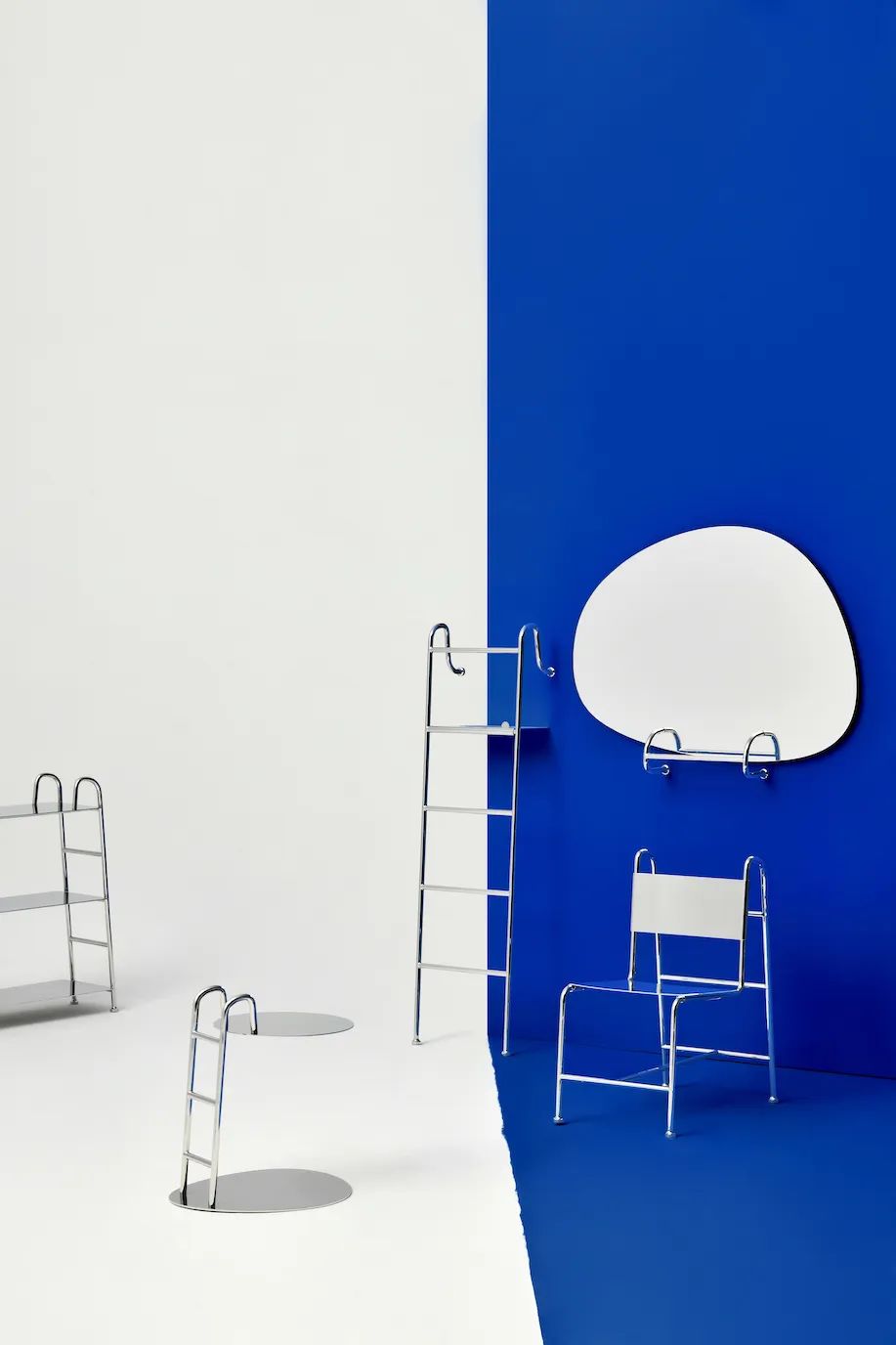
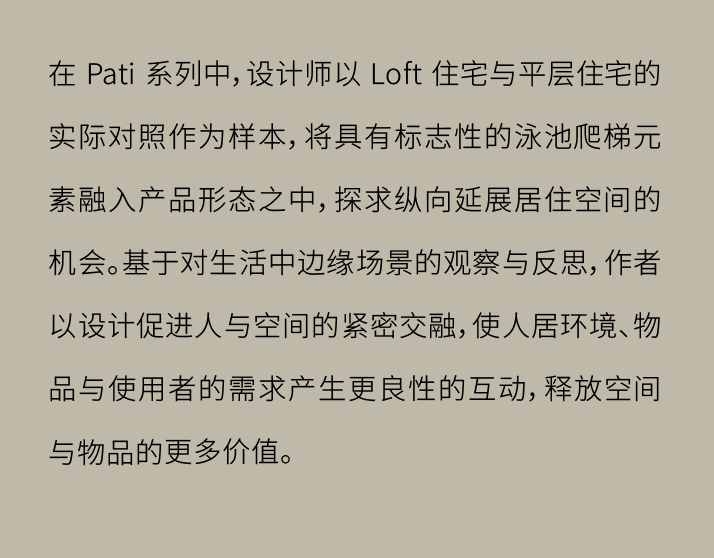
IDEAT:在拿到“圆管的使命”这个命题时,闪入脑际的第一个想法是什么?
林舒安:我当时想:“不如我们把展览做成舞台,竖一根金属管请大家来跳舞吧?”
IDEAT:最终的设计与最初的想法是有延续性的思考吗?这个设计动机发展的过程具体是怎样的?
林舒安:我们最终选择了用金属圆管来呈现作品Pati Party “爬梯” 派对。在决定选择这一材料之前,我们回溯了金属圆管最早被用来做家具的时代,去研究那些设计师为什么选择启用这种材料。这是一系列安上 “爬梯” 结构的家具,“跳舞”是最初的点子,现在这一作品的完整概念是:在今天这样一个越来越多的人住进小房子里的时代,梯子可以给人居空间带来更多纵向拓展的机会。不过,关于 “跳舞” 这个点子,我想它在某种程度上也得到了延续——我们请金属圆管来到了我们的 “泳池派对” 并为我们跳了一支还蛮疯狂的舞(笑)。
IDEAT:关于你的作品,是否可以给我们一个你觉得最贴切的形容?
林舒安:用最轻松的口吻回应那些也许很严肃的问题。
IDEAT:你觉得自己的设计中最值得一提的“亮点”是什么?
林舒安:Pati Chair 的靠背两侧有两个倾斜的 “把手” ,考虑到搬动椅子时的人机关系才做此设计。当做出第一版样品后,我们发现这个位置只要稍作调整就刚好可以撑开⻄服上衣的肩部,让外套挺阔地耷拉在上面。这个点子恰如其分,就像是圆管这一材料给我们的馈赠。
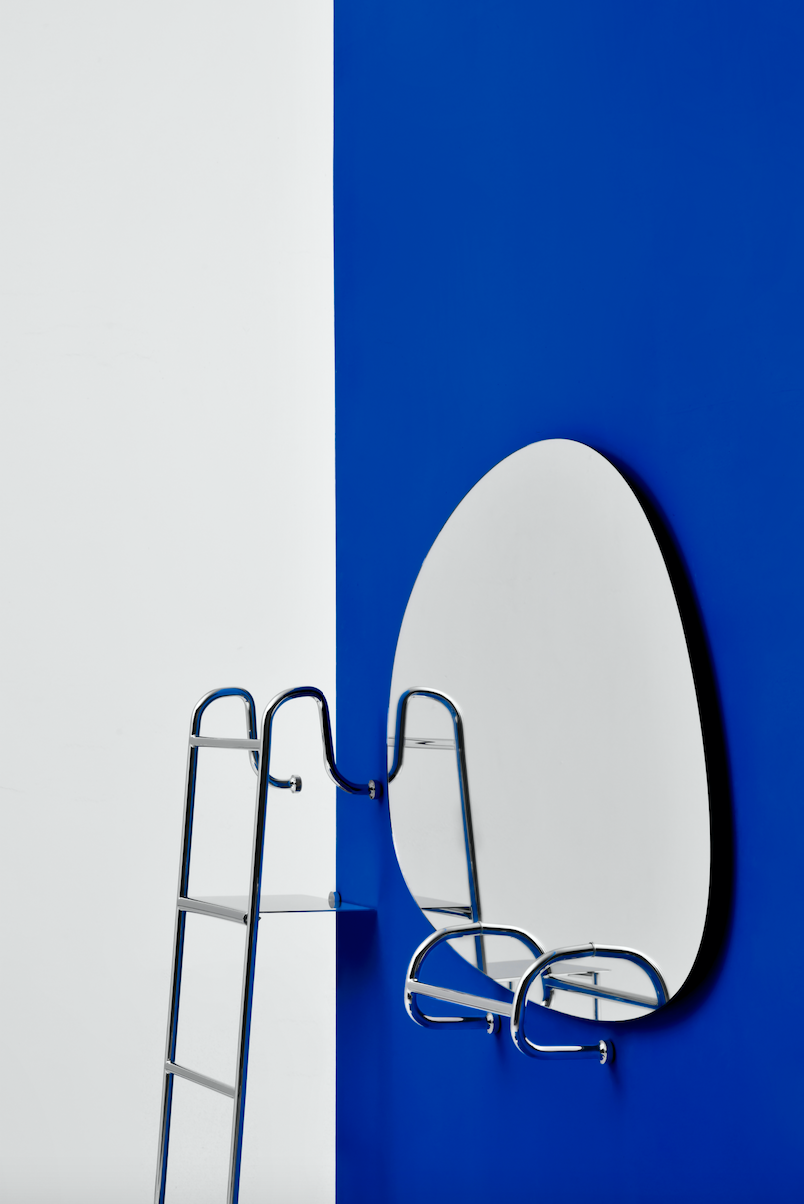
IDEAT:在四个月的创作时间里遭遇的最大挑战是什么?又是如何解决的?
Lin Shuan : The instability of the epidemic has caused a lot of trouble in production communication. During the entire production process, we were unable to enter the factory, and the efficiency of online communication was unsatisfactory. In order to ensure the accuracy of the execution process, for almost every process detail, we require the factory to make samples and then mail them to us, and then make them after confirmation.
IDEAT: Does this work reflect your usual design thinking? Can you elaborate on it?
Lin Shuan : Pati Party is a work with strong INSDIM characteristics. We have always examined our designs from the three dimensions of form and content, proportion and scale, and emotional connection. Pati Party, whether from the starting point of the project or from the final formal language, is in line with the design we set for ourselves. set standard.
IDEAT: What value do you hope your designs can provide people?
Lin Shuan : I always feel that what designers are doing is similar to that of magicians, except that the occasions we perform are everyone's daily life. A designer is a person who uses objects to present the possibility of thinking, "What would this design look like if I made it?" This is my creative motivation that has never changed. Of course, I also want our designs to be profound, plain, and articulate, but they should be presented in a more light-hearted state, and as for those thoughts we "hide in our hats", there will always be There, waiting for people to interpret it.
